Colorful is arguably an underrated brand especially when it comes to the higend segment with its Vulcan series graphics card. We’ve checked out the top of the line Colorful iGame RTX 4090 Vulcan OC-V last year and saw its build and performance to other flagship models such as the Gigabyte’s Aorus Master, and ASUS ROG Strix. The New RTX 40 SUPER Series is out and we finally have the latest Colorful iGame RTX 4070 TI SUPER Vulcan W OC to see how this card competes against other cheaper and more premium models.
Colorful iGame RTX 4070 Ti SUPER Vulcan W OC – Unboxing and Overview
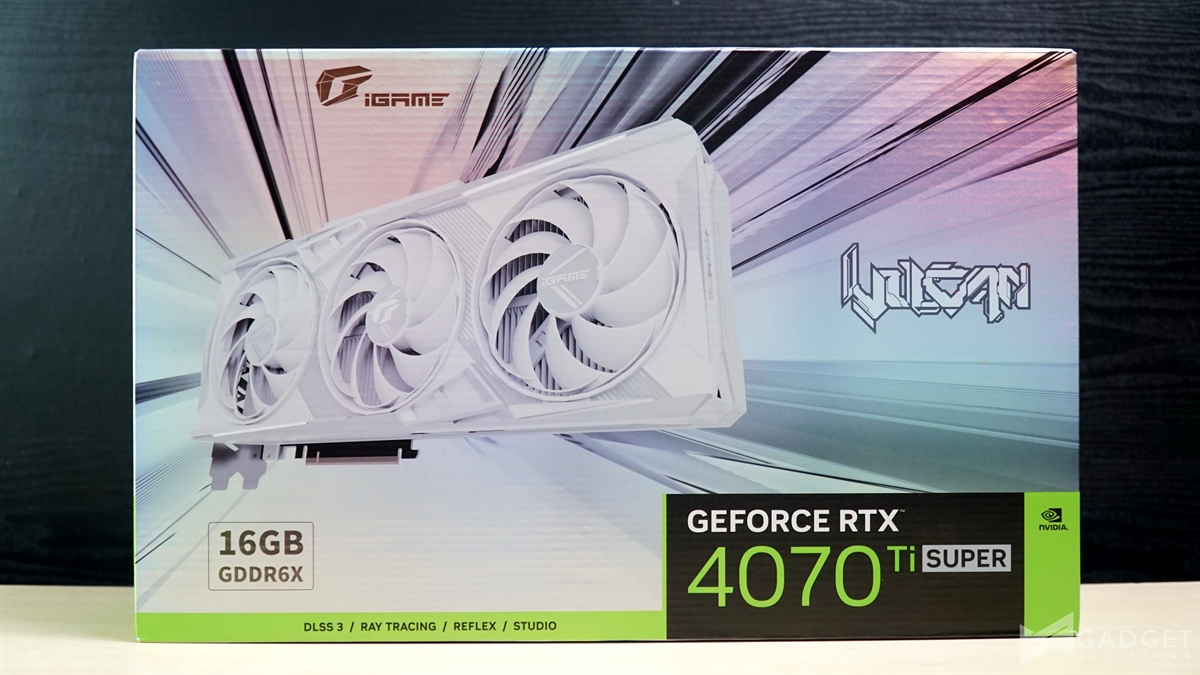
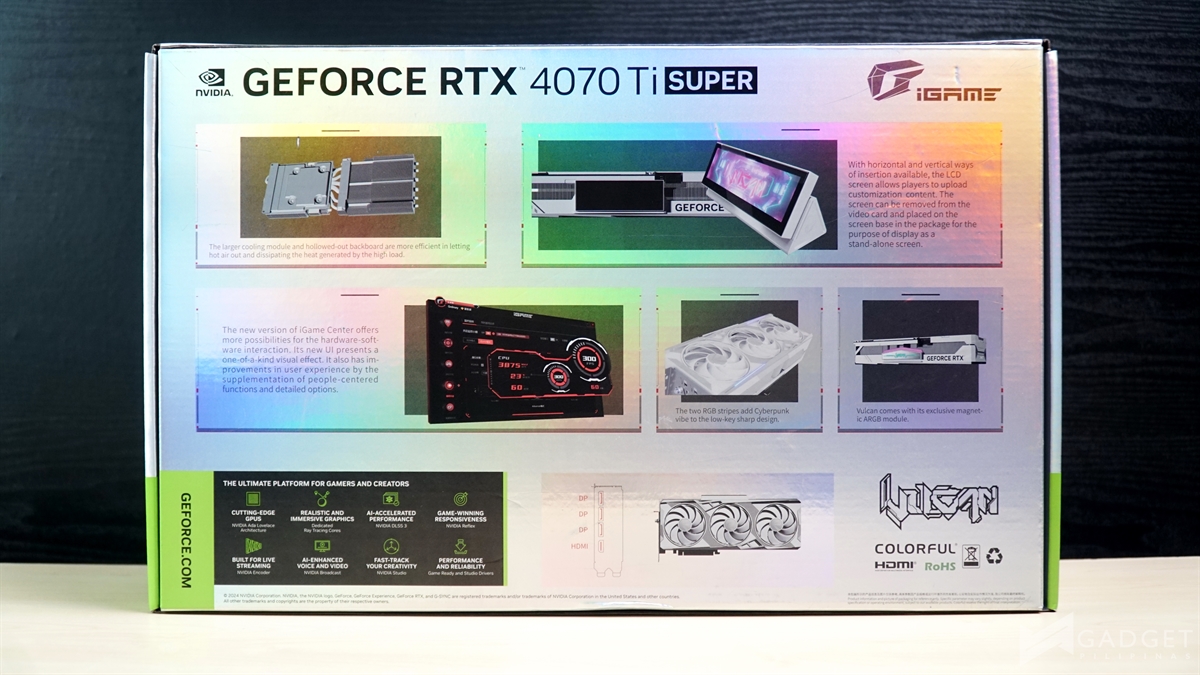
The new packaging design for the white variant of the Vulcan OC series GPUs feel more premium with the soft rainbow gradient and dominantly white design. One nitpick we have on this design is that the orientation of the GPU doesn’t show the LCD screen which is arguably a key feature and selling point of the GPU. It’s only shown on the back side of the box alongside other key features of the RTX 4070 Ti SUPER Vulcan W OC.
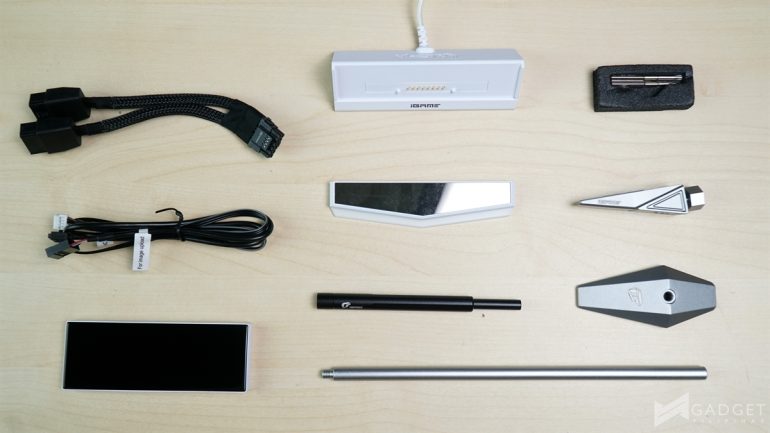
The Colorful iGame RTX 4070 Ti SUPER Vulcan W OC contains the same accesories like the RTX 4090 Vulcan V-OC namely:
- Anti-Sag Bracket Kit
- Nvidia 12VHPWR Adapter – 2x 8pin PCI-E
- Screwdriver
- Detachable LCD display and dock kit
- Vulcan lightboard
- USB 2.0 header connector
- Manual and Warranty Documentation
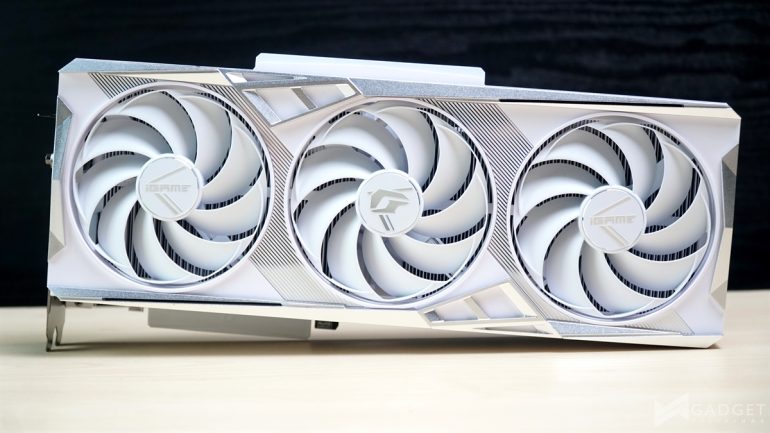
There’s no major changes made on the new white variant apart from the obvious color swap compared to the regular Vulcan model. Majority of the GPU is in a matte white color in a cool-tone with brushed silver accents. Personally, I would’ve preferred the mirror finish found on the black model to go with the white variant for a more premium look. That said, the accent finish doesn’t impact the card’s performance.
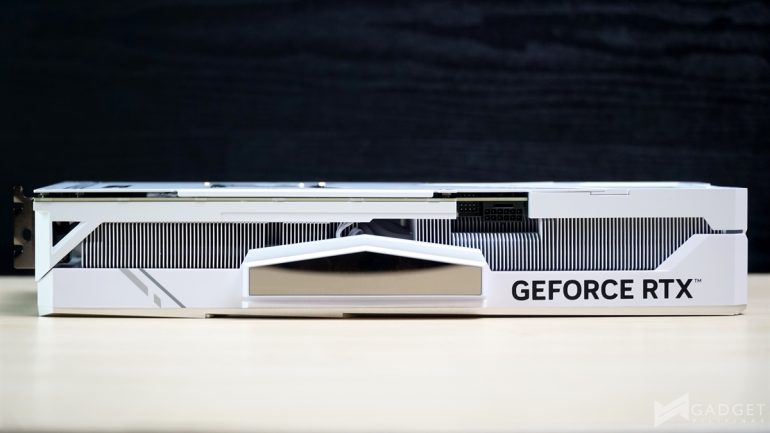
The side profile looks defnitely cleaner in white and we applaud Colorful for the extra effort of painting the heatsink white for a more uniform look – It’s a minor but rare detail found on white edition graphics cards.
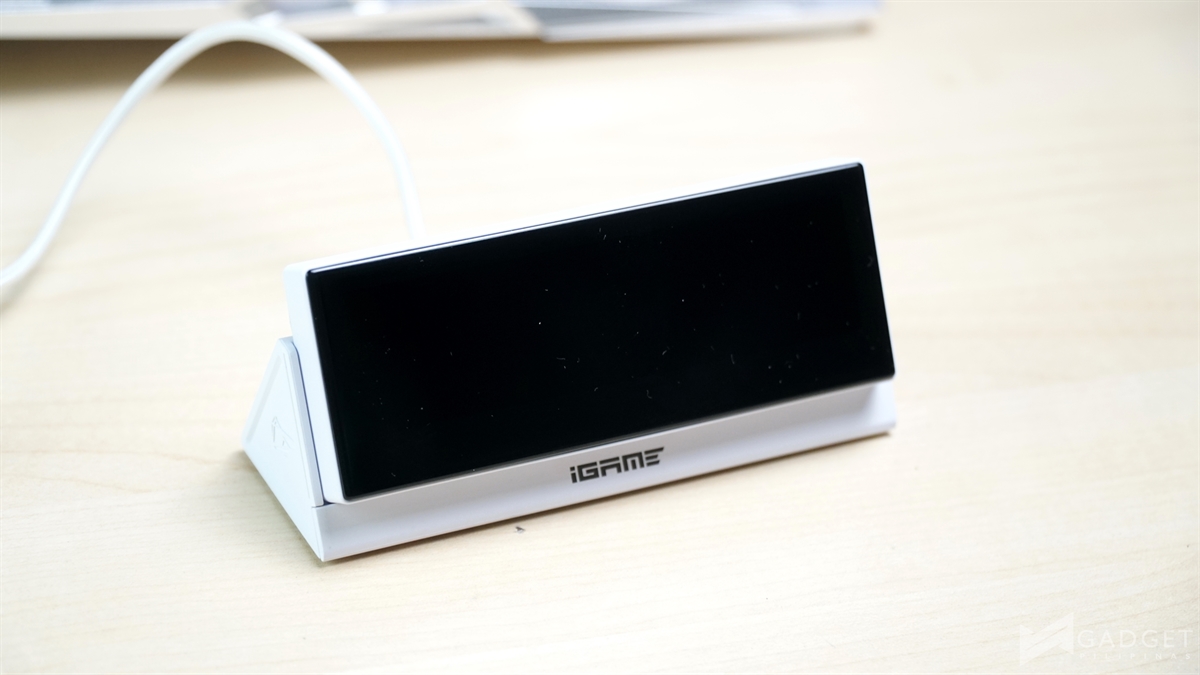
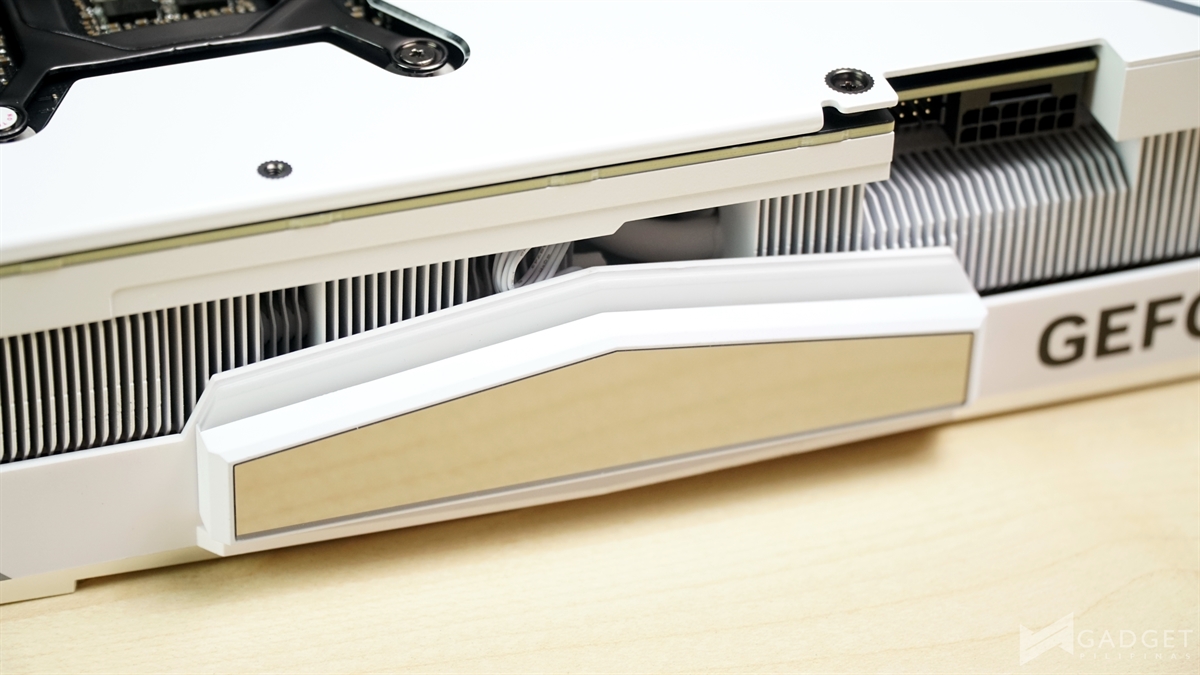
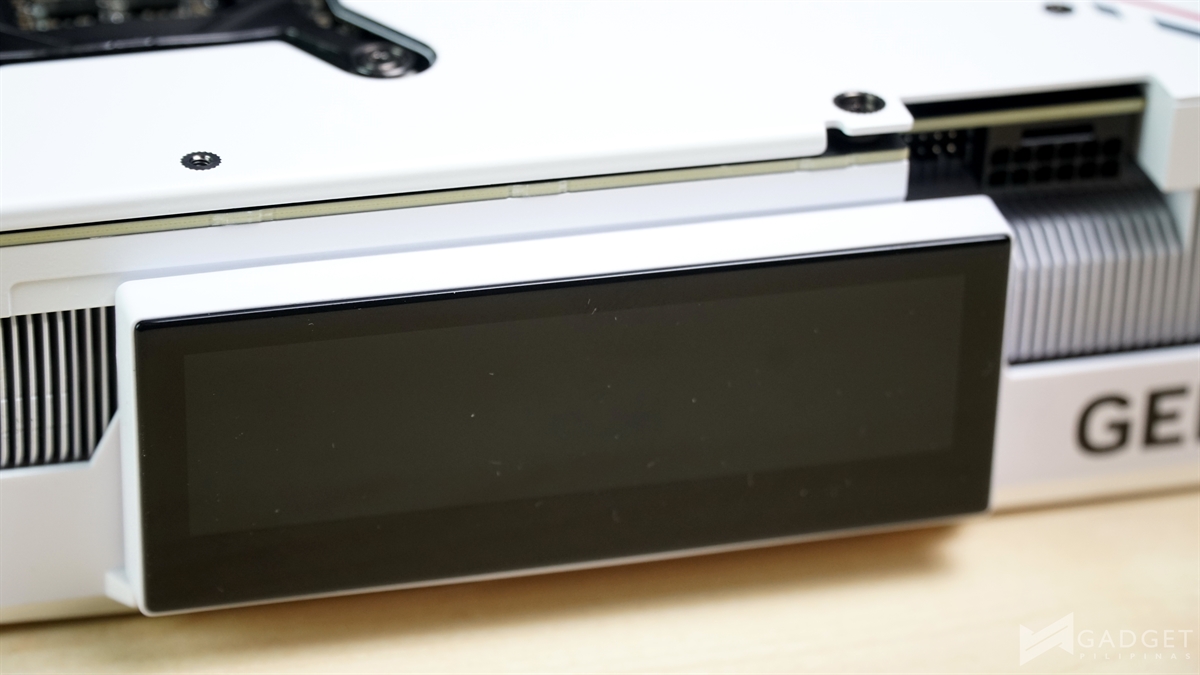
The signature feature of Vulcan W OC is its detachable display panels. The center side of the Colorful iGame RTX 4070 Ti SUPER can be equipped with either a Vulcan lightboard RGB module or the iGame smart LCD. These modules attach to the GPU via magnets and are sturdy enough to hold them once installed in a case. The Smart LCD falls off more easily compared to the lightboard RGB module due to its heavier weight.
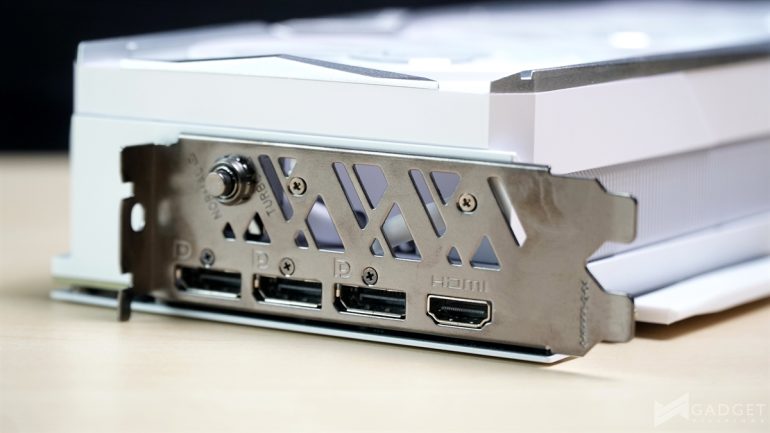
Like most highend graphics cards, the Colorful iGame RTX 4070 as an “OC button.” Unlike most highend GPUs that have the OC button near the 12VHPWR connector, the OC button is located on the GPU bracket. White it does make it more accessible, the Vulcan W OC losses the extra video port resulting in the standard three Display Port 1.4a and one HDMI 2.1 port configuration.
iGame Center Software and Smart LCD
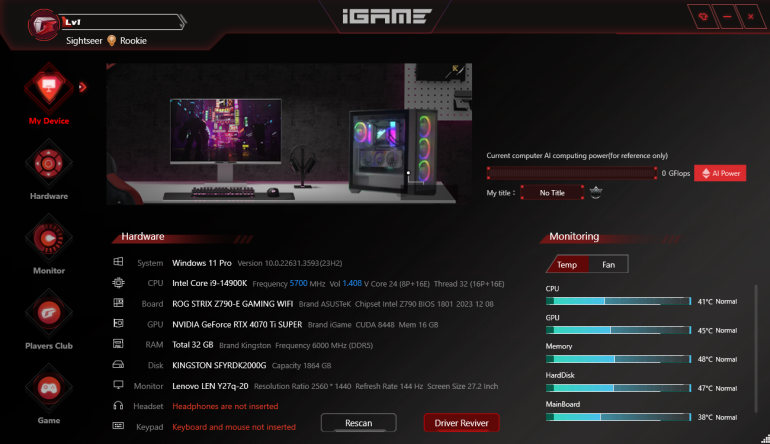
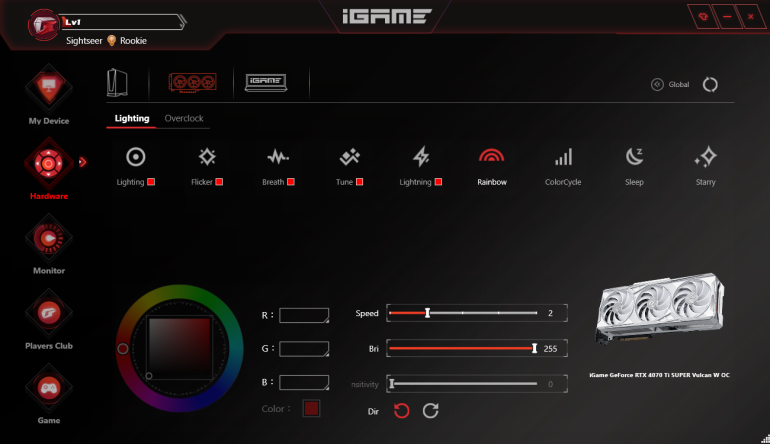
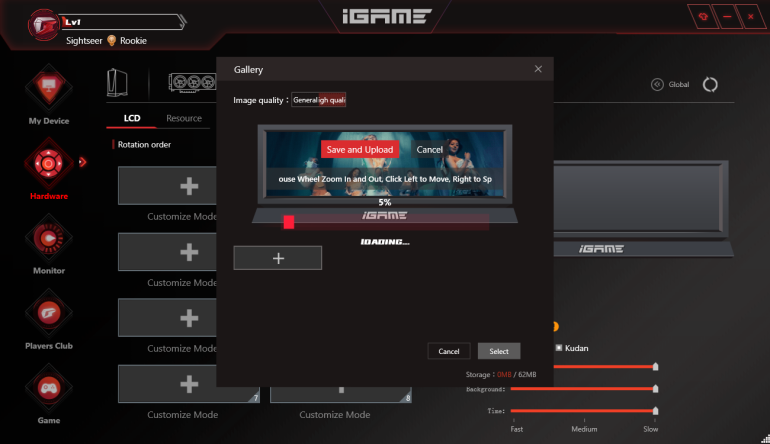
iGameCenter 2.0 lets you manage RGB lighting, hardware monitoring, overclocking. It’s also where you can customize the detachable Smart LCD display and can store up to eight modes. YApart from the presets listed, upload images, videos, and GIFs to have them play on the 800×216 display. There is a limit on the media that you can store as the module can only store up to 62MB worth of data. When uploading GIFs or videos, we recommend using the cable for a much faster and smoother experience.
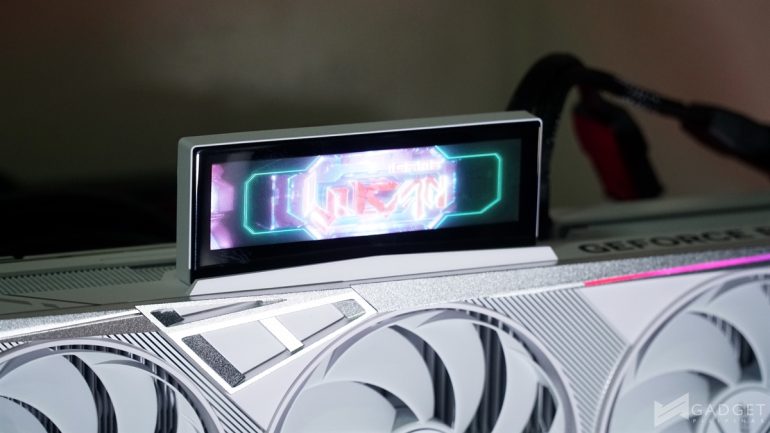
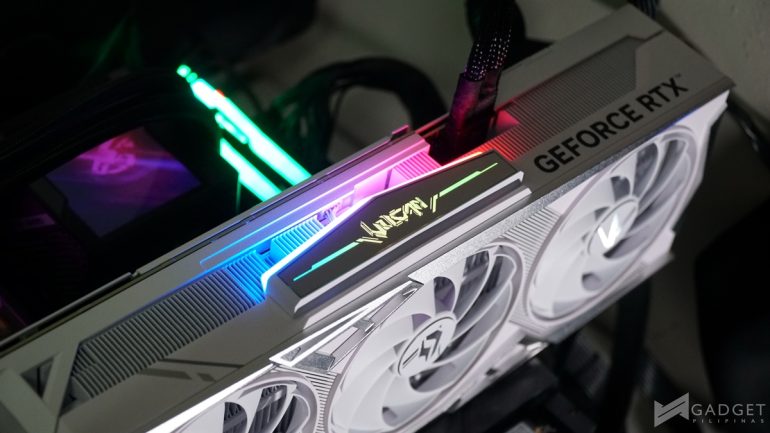
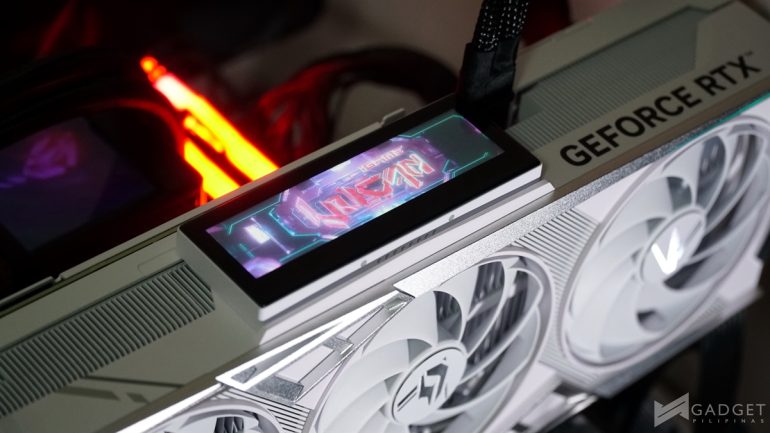
There’s no spec change on the iGame Smart LCD coming from the one found on RTX 40 Series non-super GPUs. You have two orientations available for the LCD to match your GPU-Case orientation with the option to have it placed anywhere thanks to teh extension cable. That said, the new Vulcan RGB plate seems to have a better diffusion and higher brightness compared to the one found on the RTX 4090 Vulcan OC-V GPU.
Benchmark Setup and Test Methodology
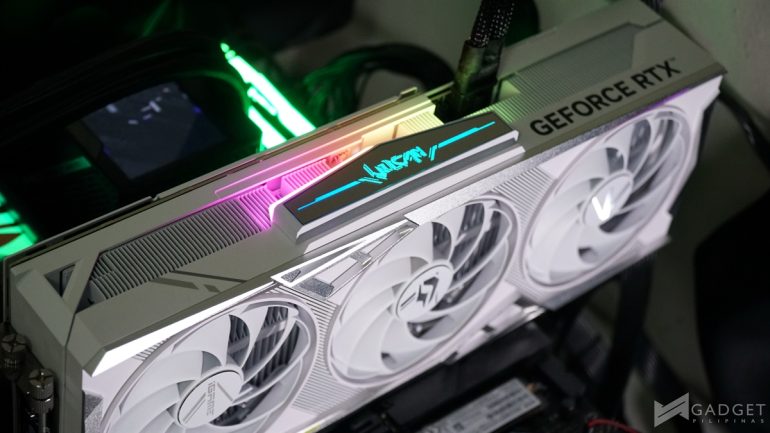
Gadget Pilipinas’ testing philosophy is to provide detail-oriented results as accurately as possible so that our readers can replicate our tests given that these conditions are met. Different benchmarking apps and sequences are used depending on the component or device being tested.
| CPU | Intel Core i9 14900K |
| COOLER | ASUS ROG RYUJIN II 360mm V2 – Noctua NT-H2 Thermal Paste |
| MOTHERBOARD | ASUS ROG Strix Z790-E Gaming |
| MEMORY | Kingston Fury Beast RGB 32GB(2x16GB) 6000 MHz DDR5 |
| GPUs | RTX 4080 SUPER FE | Gigabyte RTX 4070 Ti AERO | Inno3D RTX 4070 SUPER Twin X2 | RTX 4070 SUPER FE | RTX 4070 FE | 552.44 driver | AMD RX 7800 XT |
| STORAGE | Kingston Renegade 2TB PCI-E Gen4 NVMe SSDD |
| POWER SUPPLY | FSP HYDRO GT PRO 1000W Gold ATX 3.0 |
| OPERATING SYSTEM | Windows 11 Pro Build 22H2 |
We use CapFrameX 1.7.2 Beta as our primary FPS capture and analysis tool for all our gaming benchmarks. The latest build version of Windows 11 Pro and WHQL-certified drivers are used for our benchmarks. Readings such as temperatures and power draws are recorded using HWINFO64, and other relevant software for cross-checking.
For more information read our Benchmark Methodology article.
Colorful iGame RTX 4070 Ti SUPER Vulcan W OC Synthetic and Productivity Benchmarks
3DMark Firestrike and TimeSpy
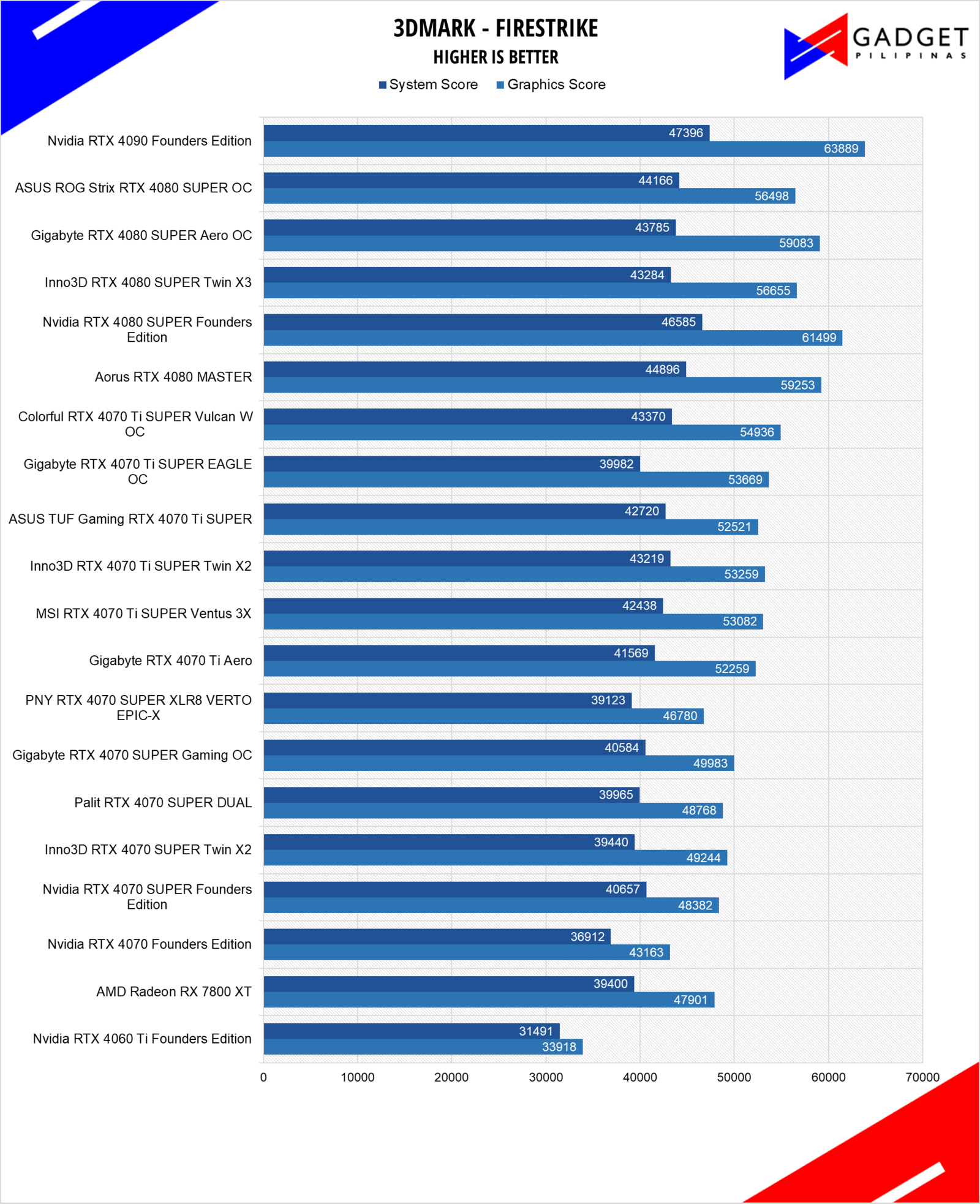
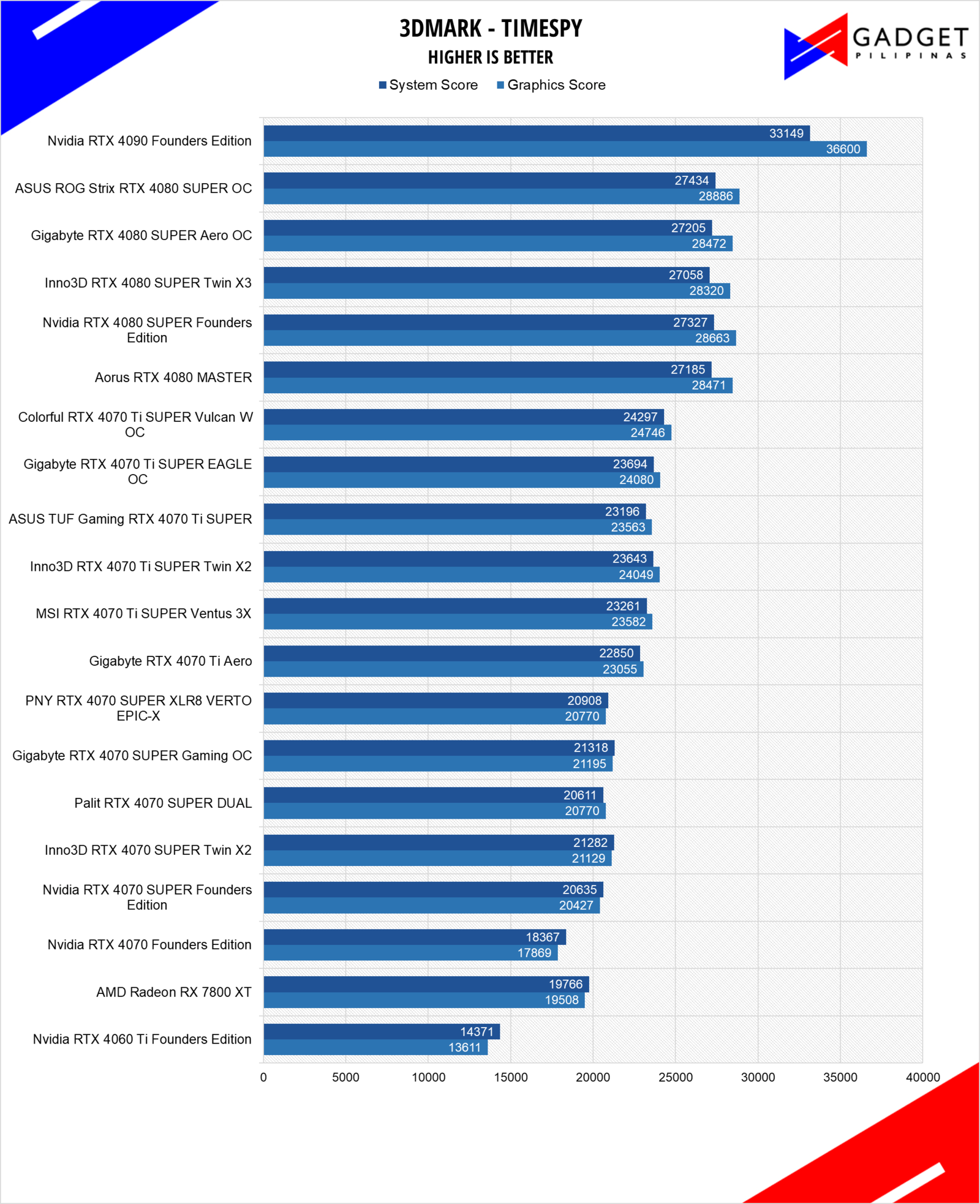
3DMark is the go-to benchmark for gamers because of the ability to share and compare results online. We test GPUs both in DX11 Firestike and DX12 Timespy to get a gauge of the performance.
Blender
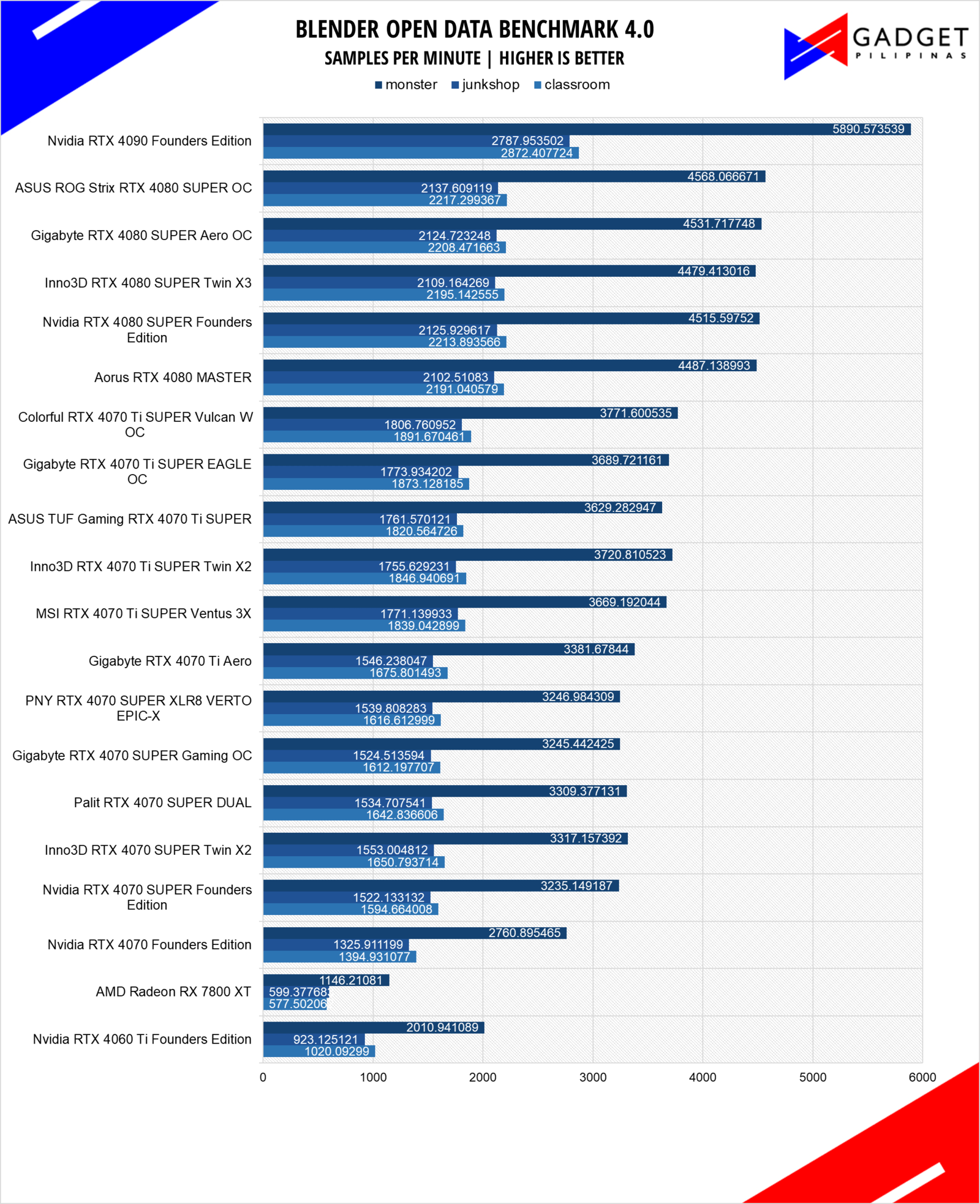
Blender is a widely used, free, open-source 3D creation suite. It supports the whole 3D pipeline process from modeling, rigging, animation, simulation, rendering, and even motion tracking. Blender has become a standard for CPU benchmarks with the BMW27 and Classroom Scene most used. This prompted the company to release Blender Open Data Benchmark in 2018, a benchmark-specific version allowing users to run a preset benchmark and share the results online like 3DMark.
VRAY 5
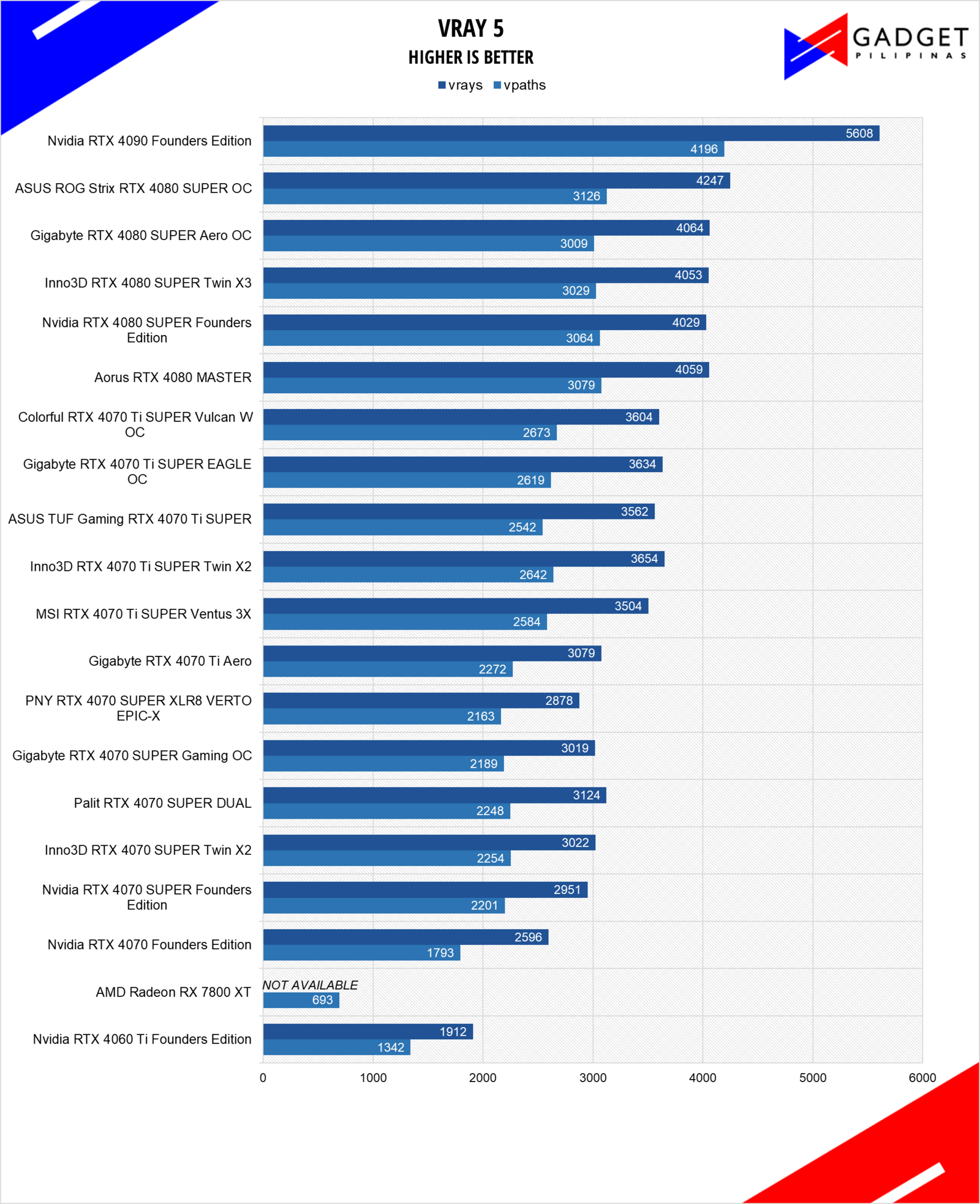
V-Ray Benchmark is a stand-alone version of V-Ray developed by Chaos Group. It is designed to test the CPU and GPU by rendering sample scenes at a fixed amount of time. V-Ray is a plug-in mostly utilized by 3D computer graphics software applications mainly for industrial design, product design, architecture, film, and video game production. V-Ray is not limited to 64-threads as it supports multi and mega-threading.
GeekBench 6.2.2
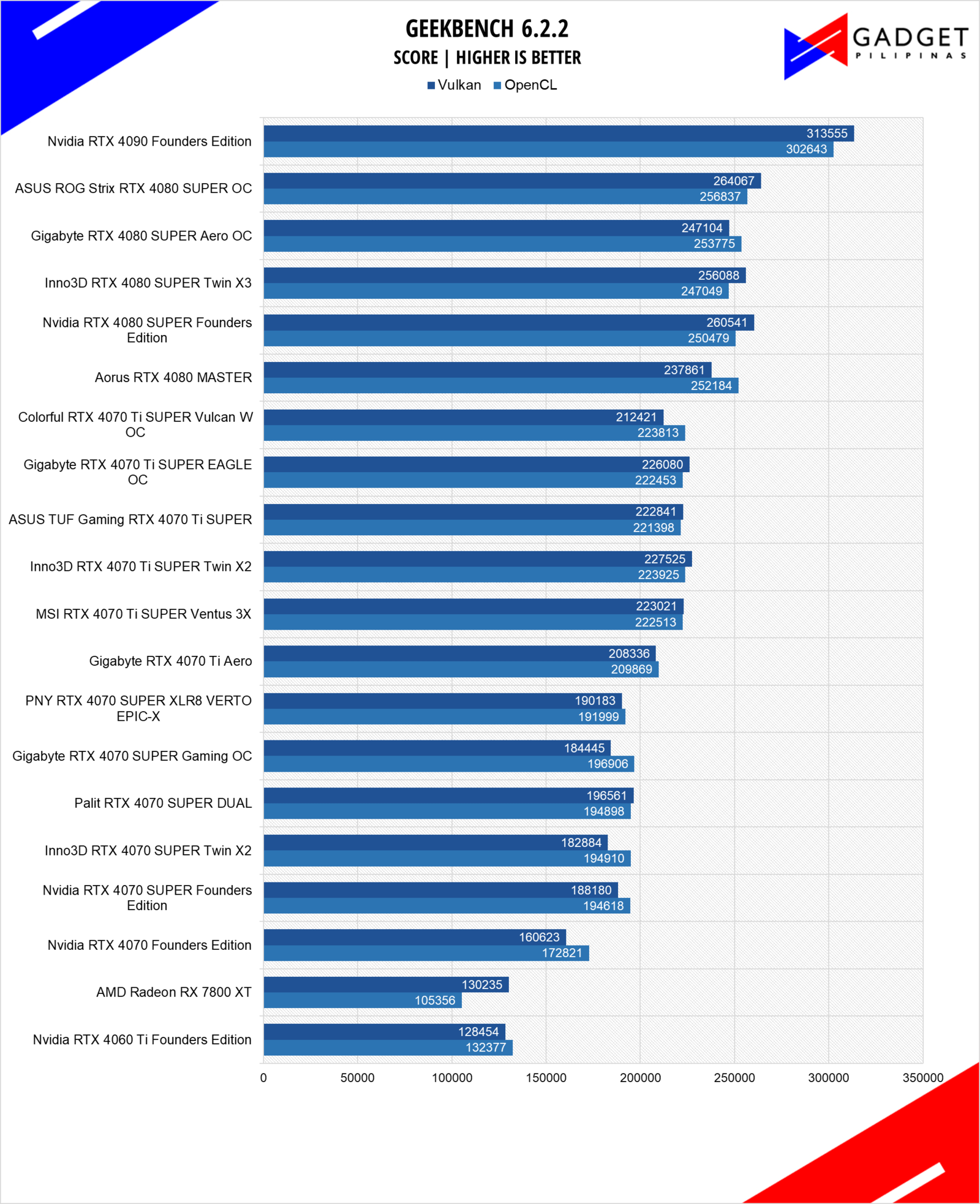
Geekbench is a multi-platform benchmark used to gauge CPU performance and compare them across Windows, Mac, and Mobile. Geekbench 6 is the latest version and test are done in both OpenCL and Vulkan to gauge a CPU’s compute performance.
CINEBENCH 2024
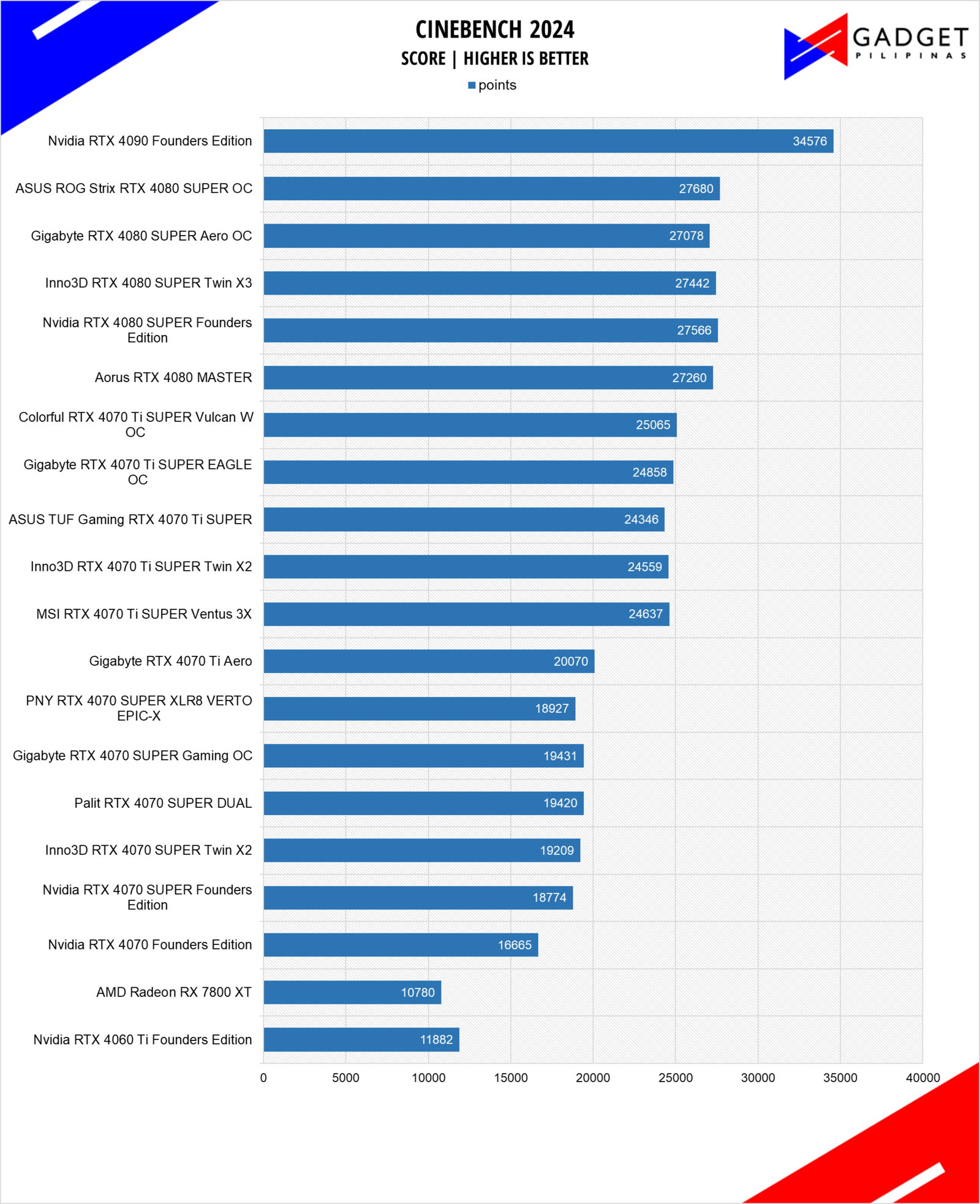
Maxon’s Cinebench benchmark is one of the most iconic benchmark applications used by reviewers and enthusiasts. The latest Cinebench 2024 now supports GPU rendering benchmarks which is why added Cinebench 2024 in our GPU benchmark suite.
Colorful iGame RTX 4070 Ti SUPER Vulcan W OC Gaming Benchmarks
RETURNAL



Returnal is one of the most technologically advanced game since the launch of Cyberpunk 2077. Released last April 2021 on PS5 and February 2023 on PC, it uses Unreal Engine 4 and supports multiple technologies such as Ray Tracing, DLSS, VSR, and FSR.
COUNTERSTRIKE 2
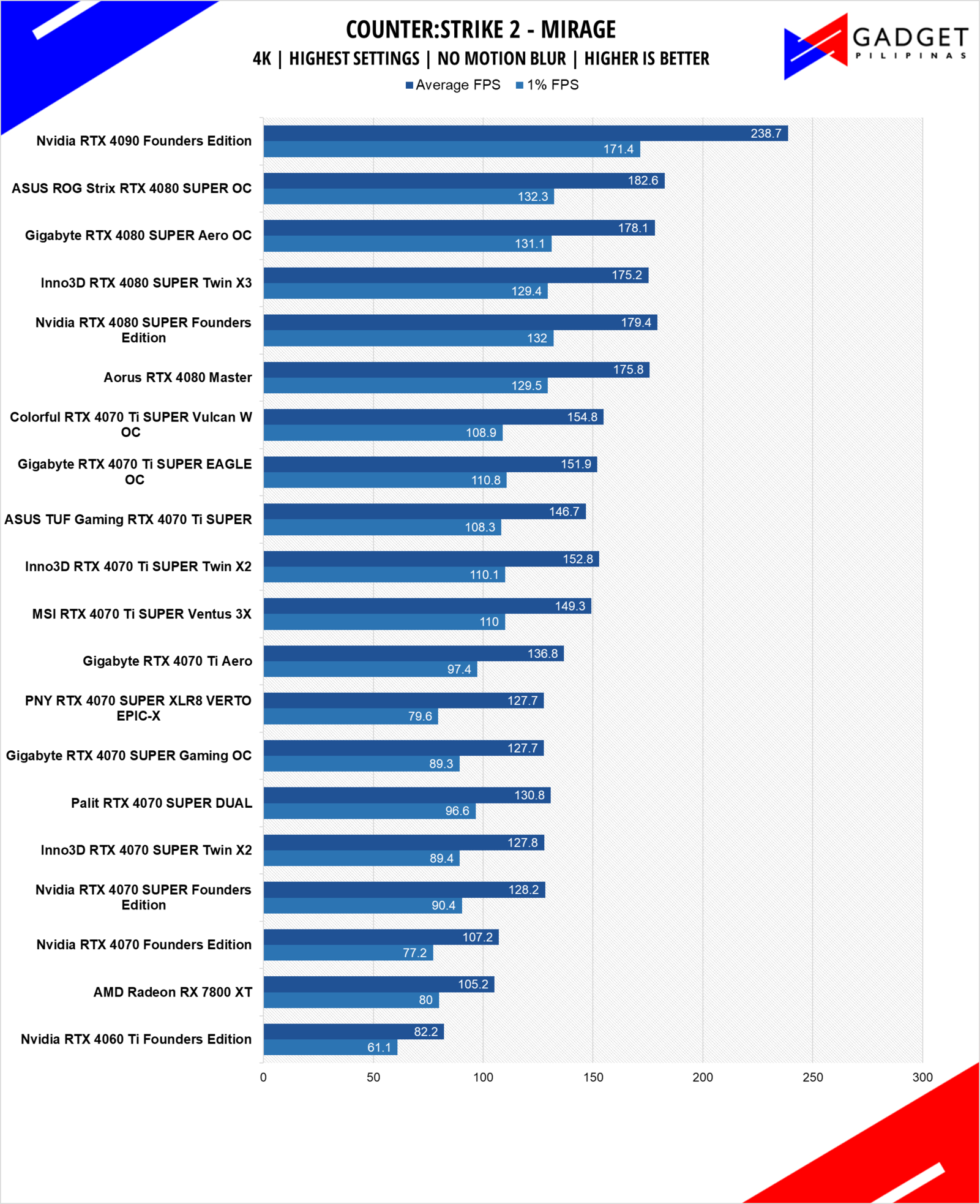
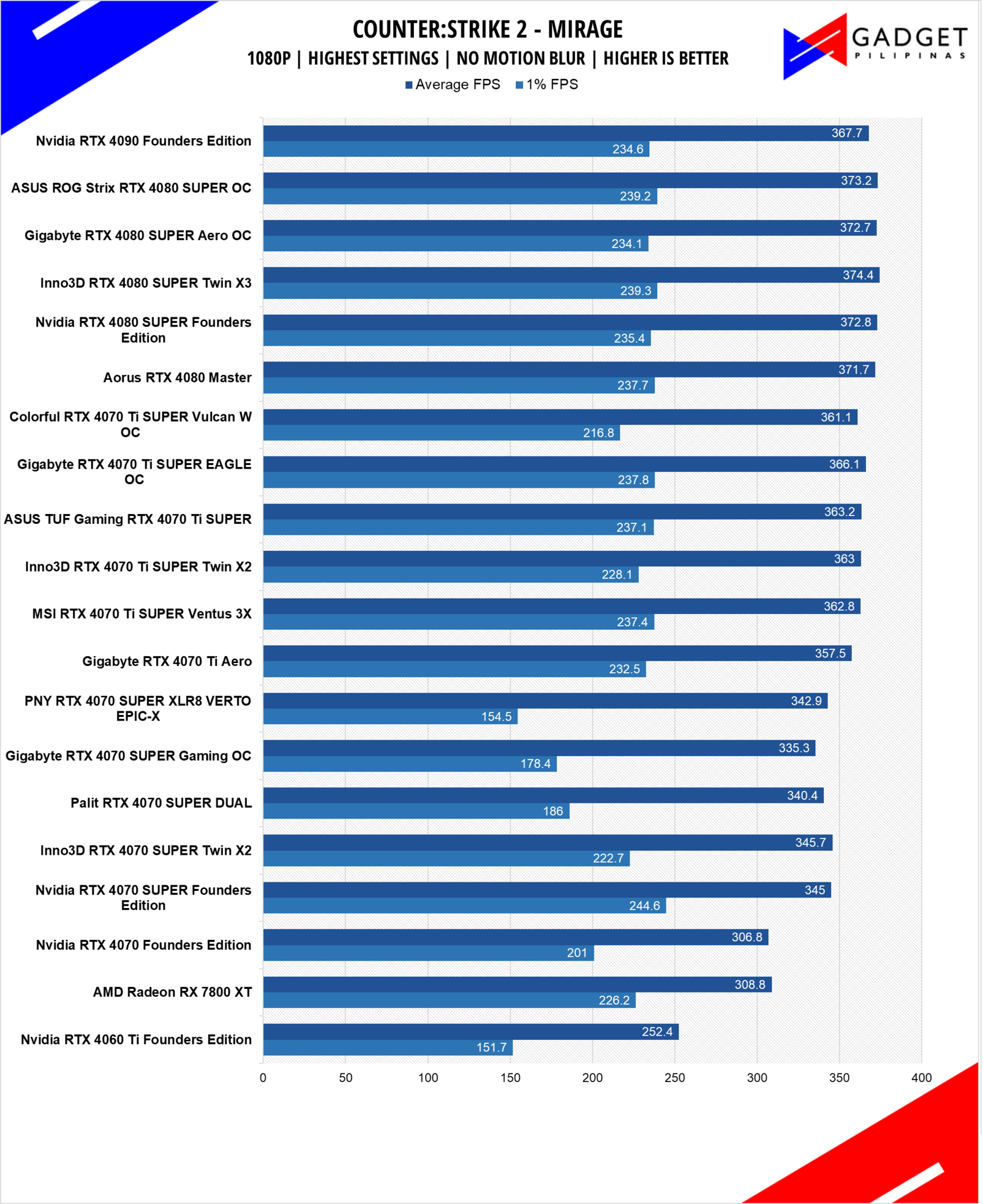
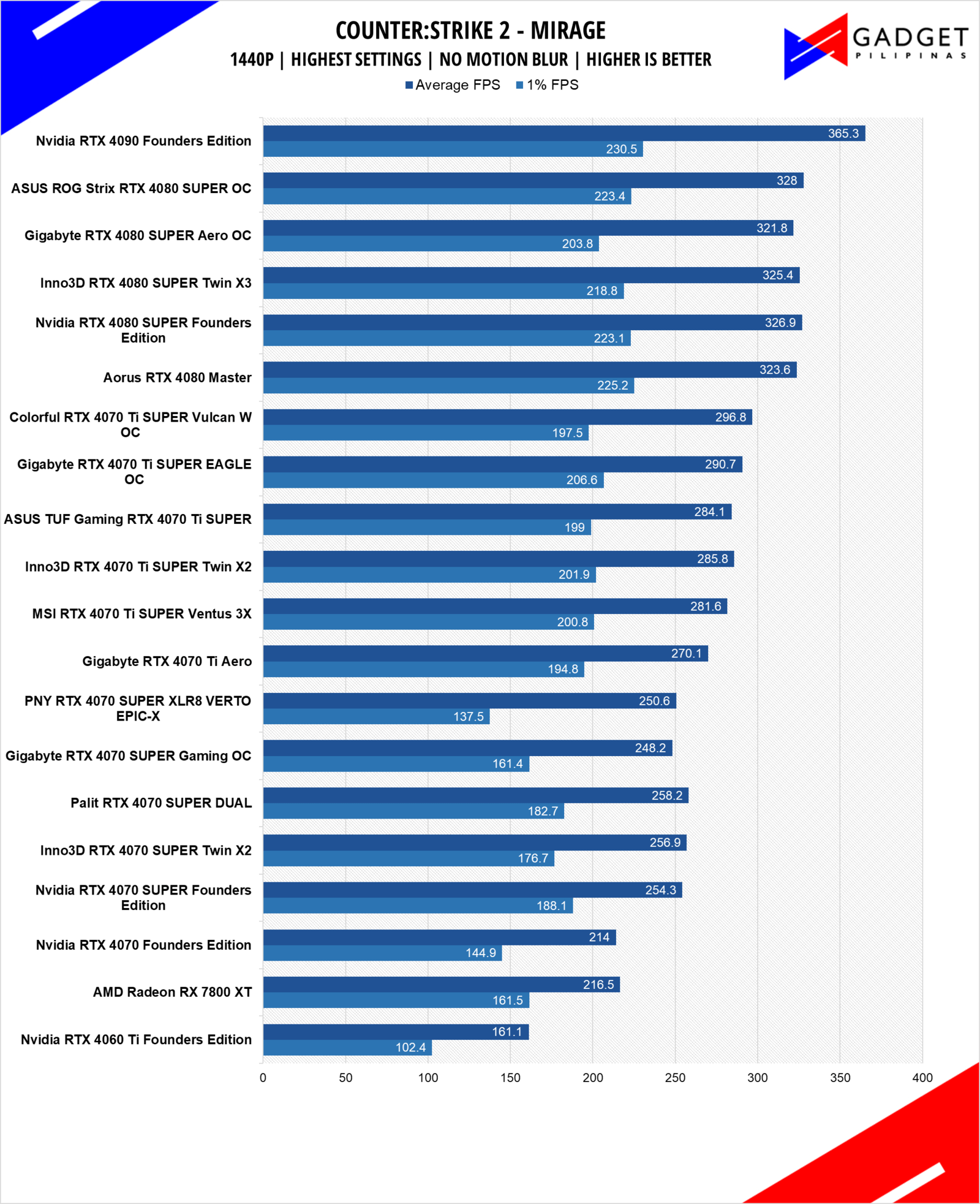
CounterStrike 2 or CS2 is a the successor to the now retired CSGO and now uses the Source 2 Engine – the same engine used on DOTA 2. CS2 is a great FPS game to test out CPU performance. Our benchmark process uses a the replay function of the game.
DOTA 2
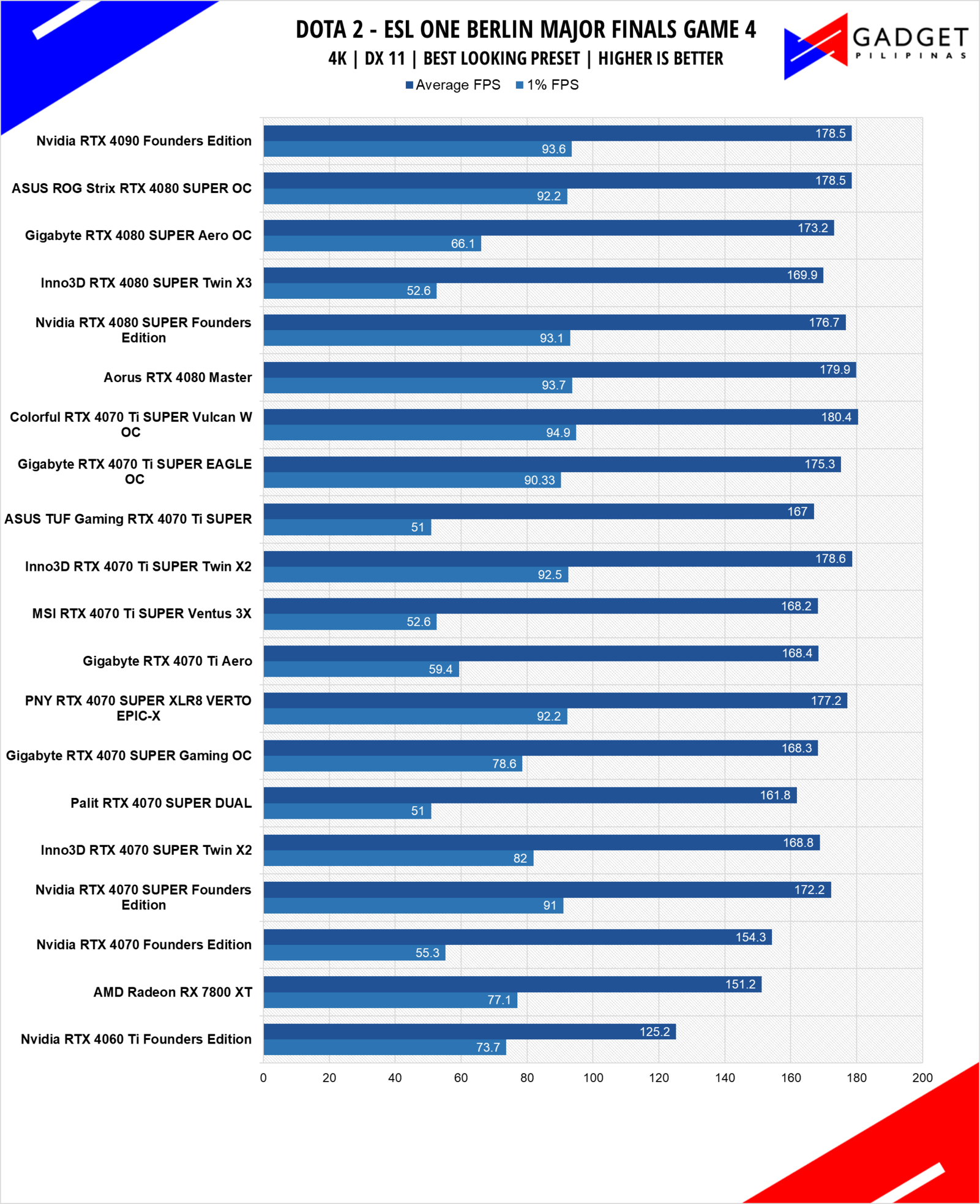
Dota 2 is a good repesentation among F2P titles especially MOBAs and RTS as it lands on the demanding side of the spectrum. Its gameplay and quality of life updates are far more frequently than most F2P titles thanks to its vast popularity. Our benchmark sequence is based on a replay of OG vs. Gaimin Gladiators in the ESL ONE Berlin Major Finals Game 4 from the team fight that happened from 23:00 to 24:00.
SPIDER-MAN: MILES MORALES
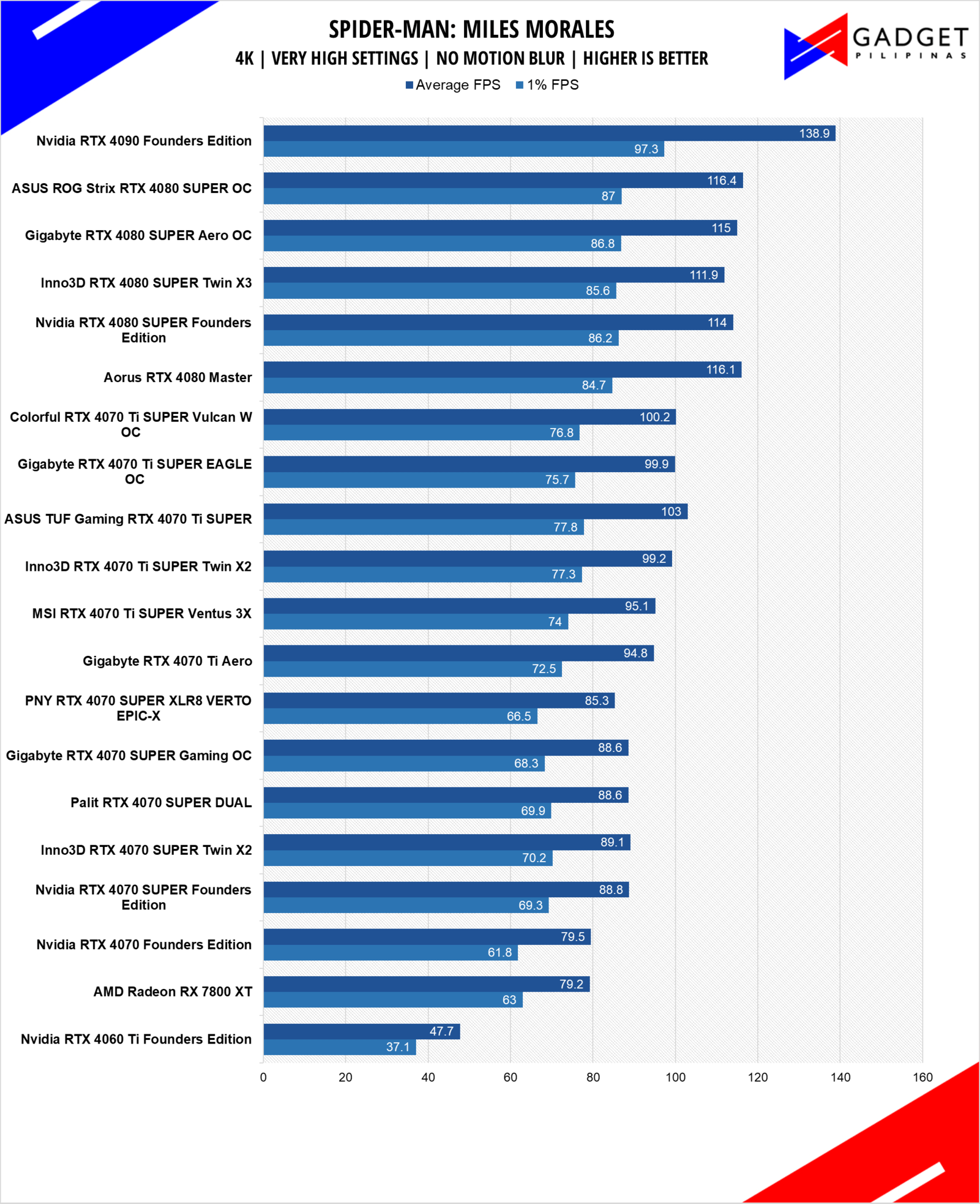
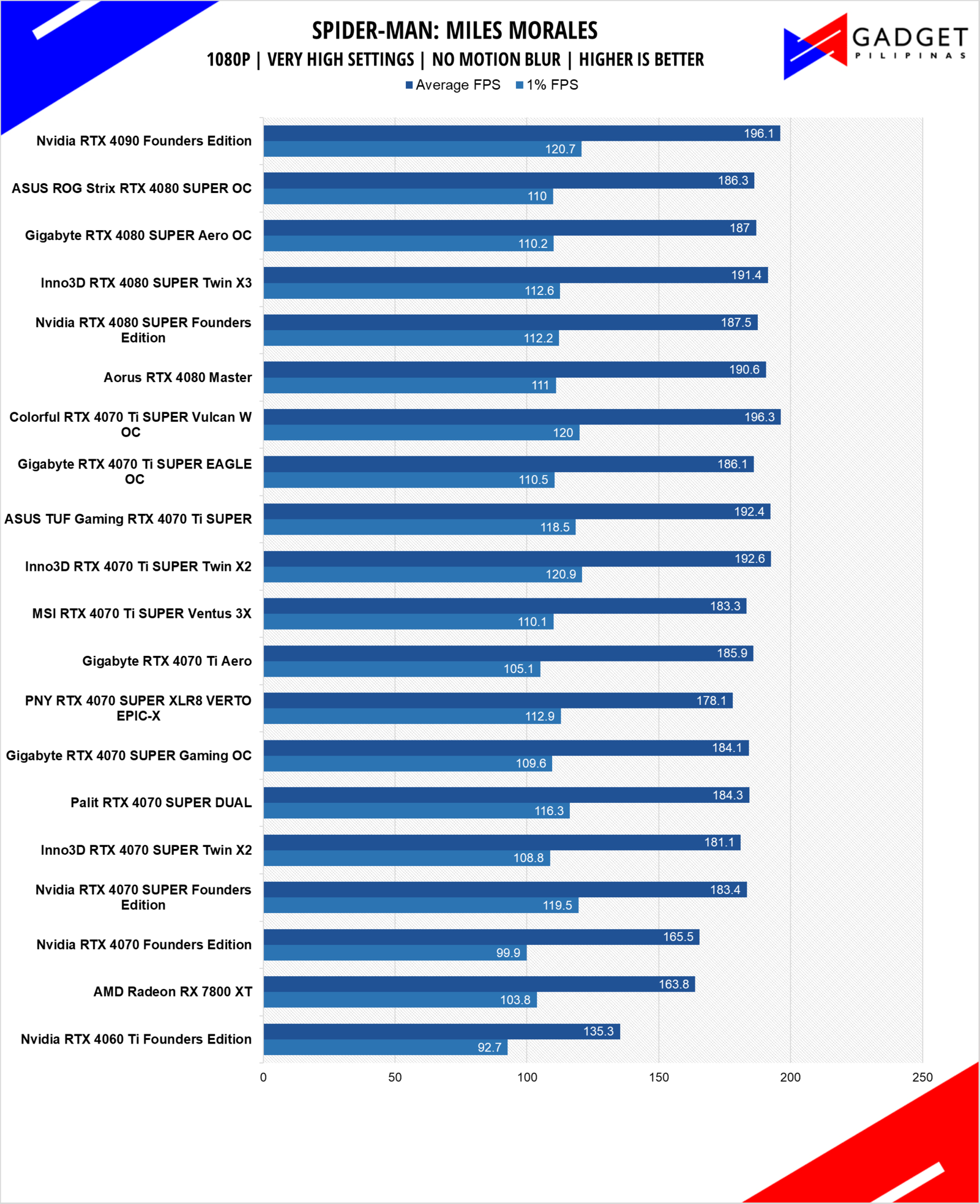
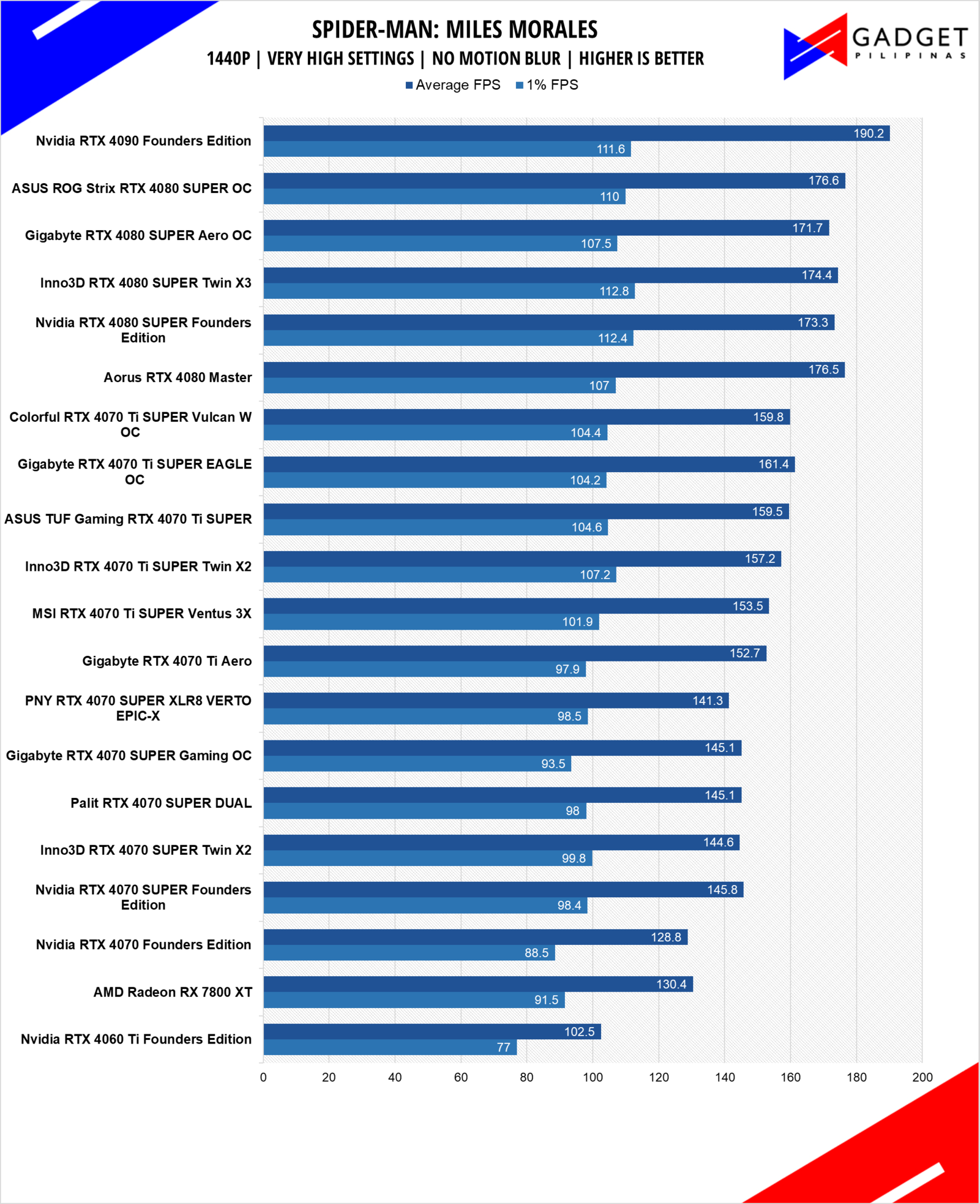
Marvel’s Spider-Man: Miles Morales is developed by Insomniac Games and published by Sony is one of the most popular PC port titles last 2022. It’s one of the few modern game titles that support upscaling technologies FSR, DLSS, and XeSS making it a great title to use for benchmarks.
F1 23
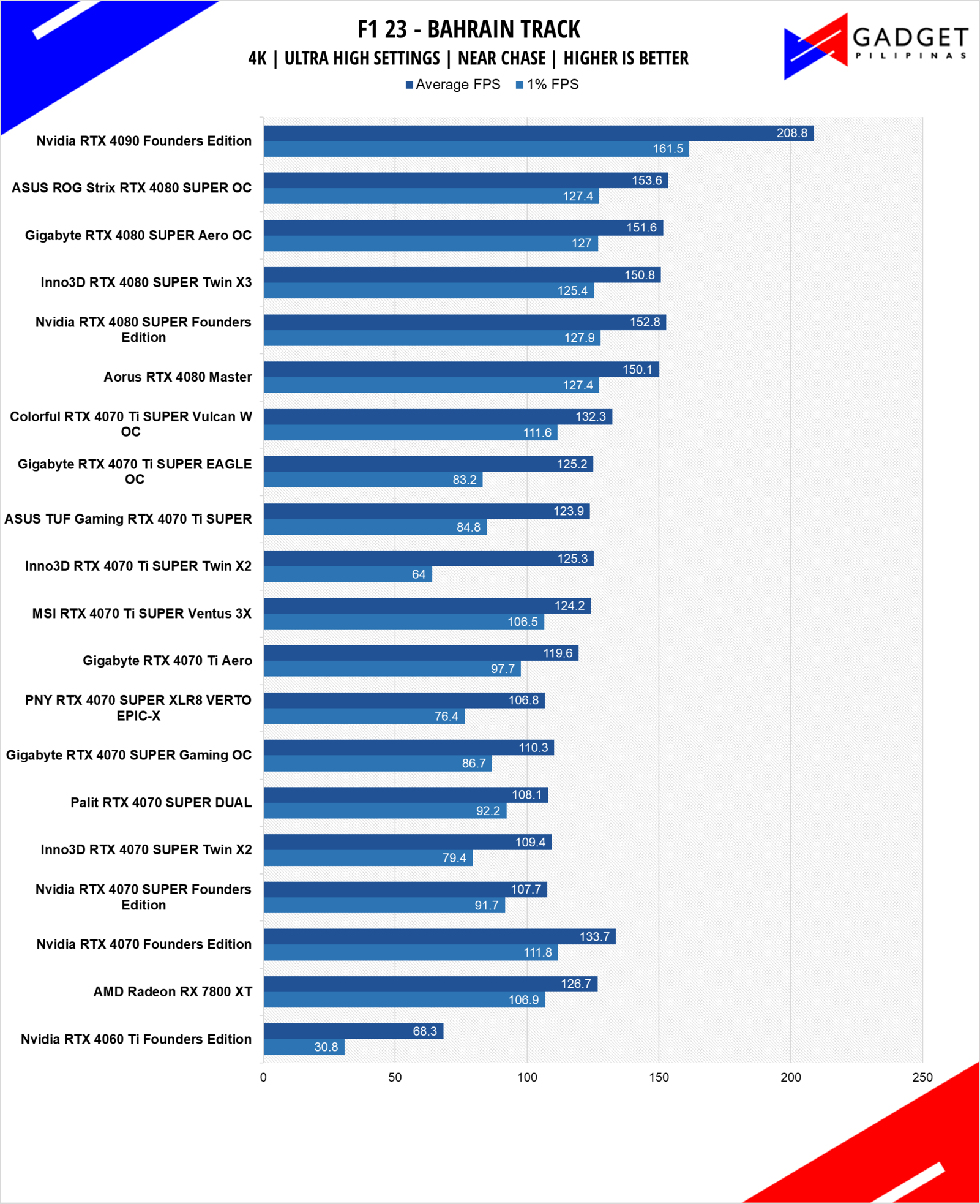
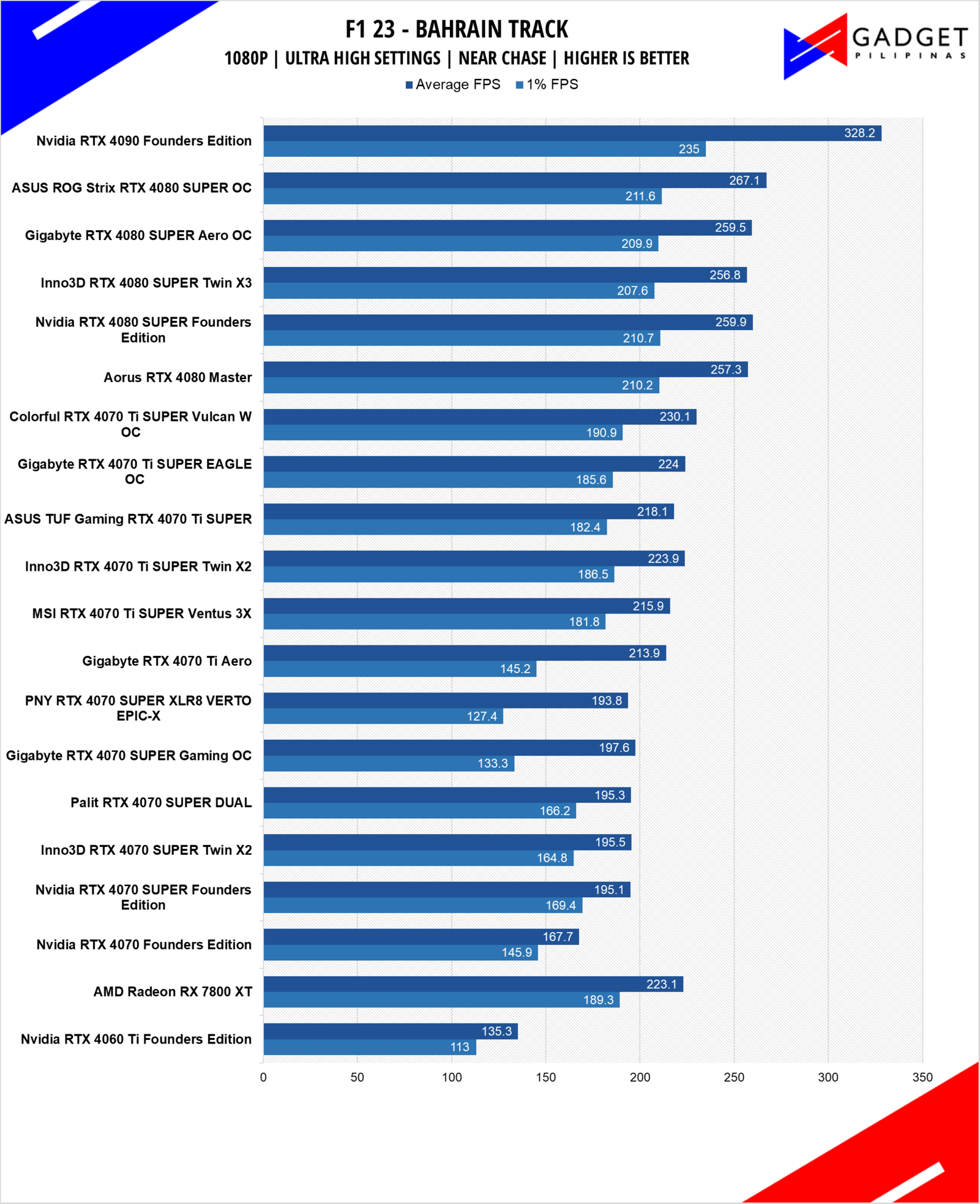
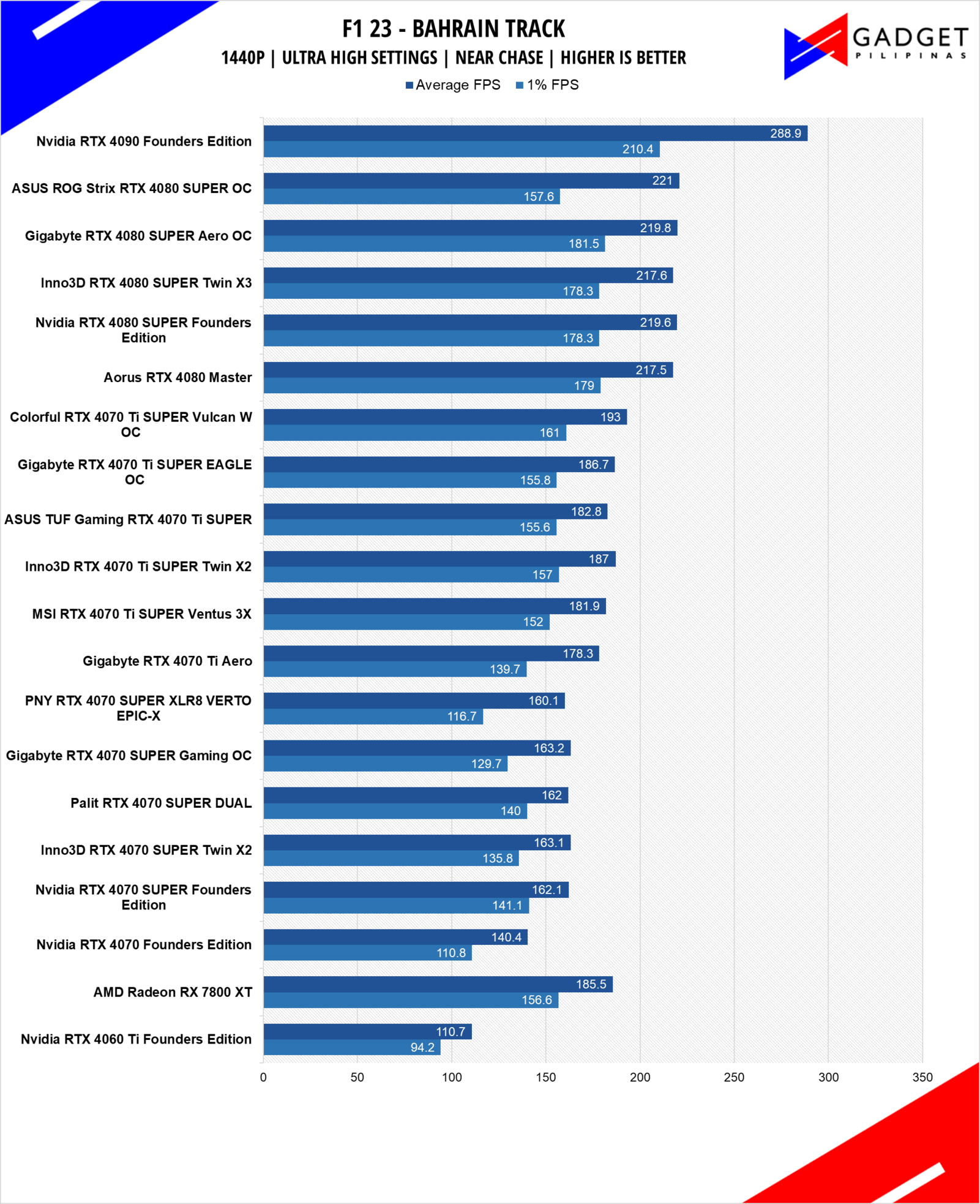
F1 23 is the official video game of the 2023 Formula One and Formula 2 championships developed by Codemasters. F1 2023 is the sixteenth installment in the franchise and uses the Ego Engine 4.0. F1 233 is a good representation of racing games thanks to its realistic graphics and fairly demanding spec requirements as well as support for Ray Tracing and the latest upscaling technologies such as DLSS, XeSS, and FSR.
ASSASSIN’S CREED: MIRAGE
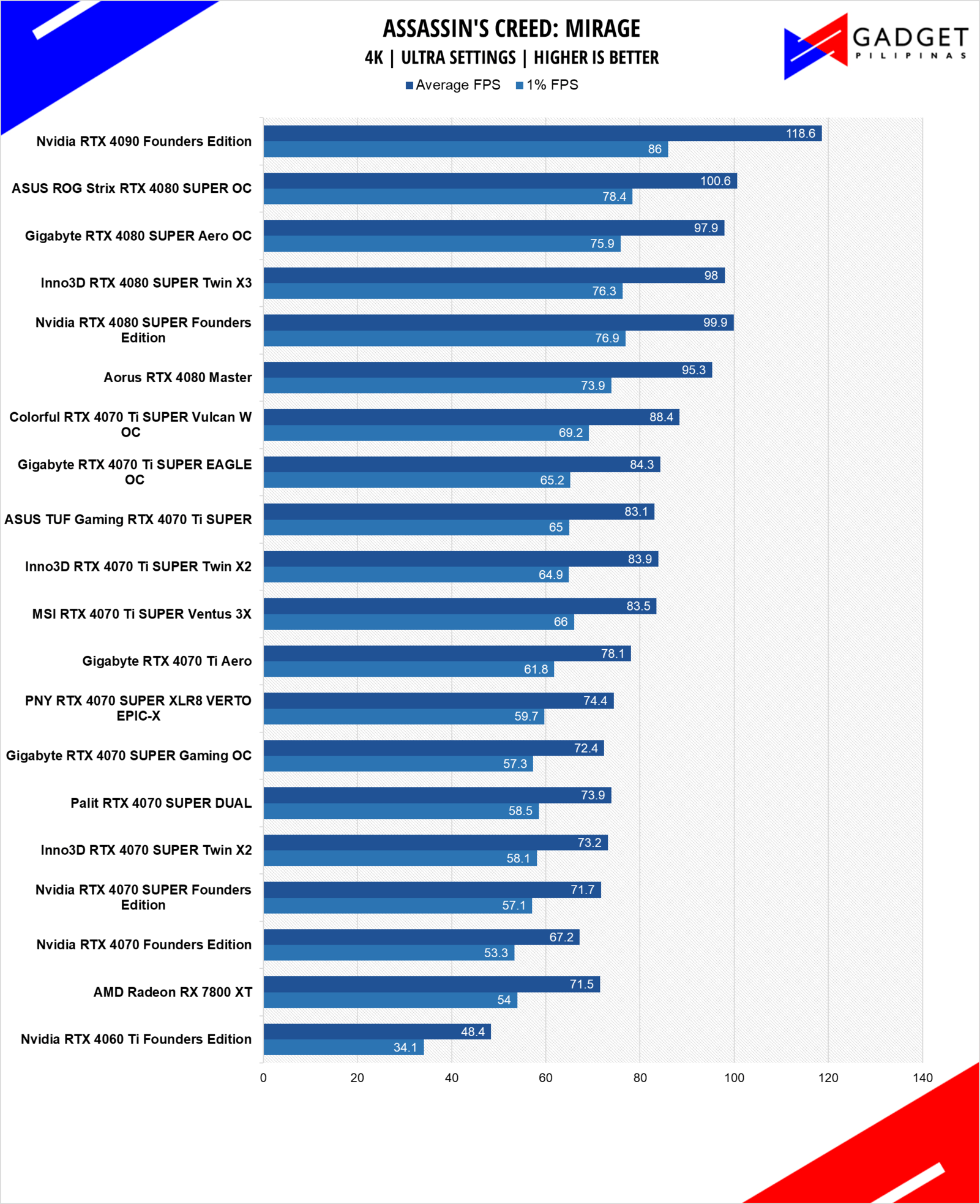
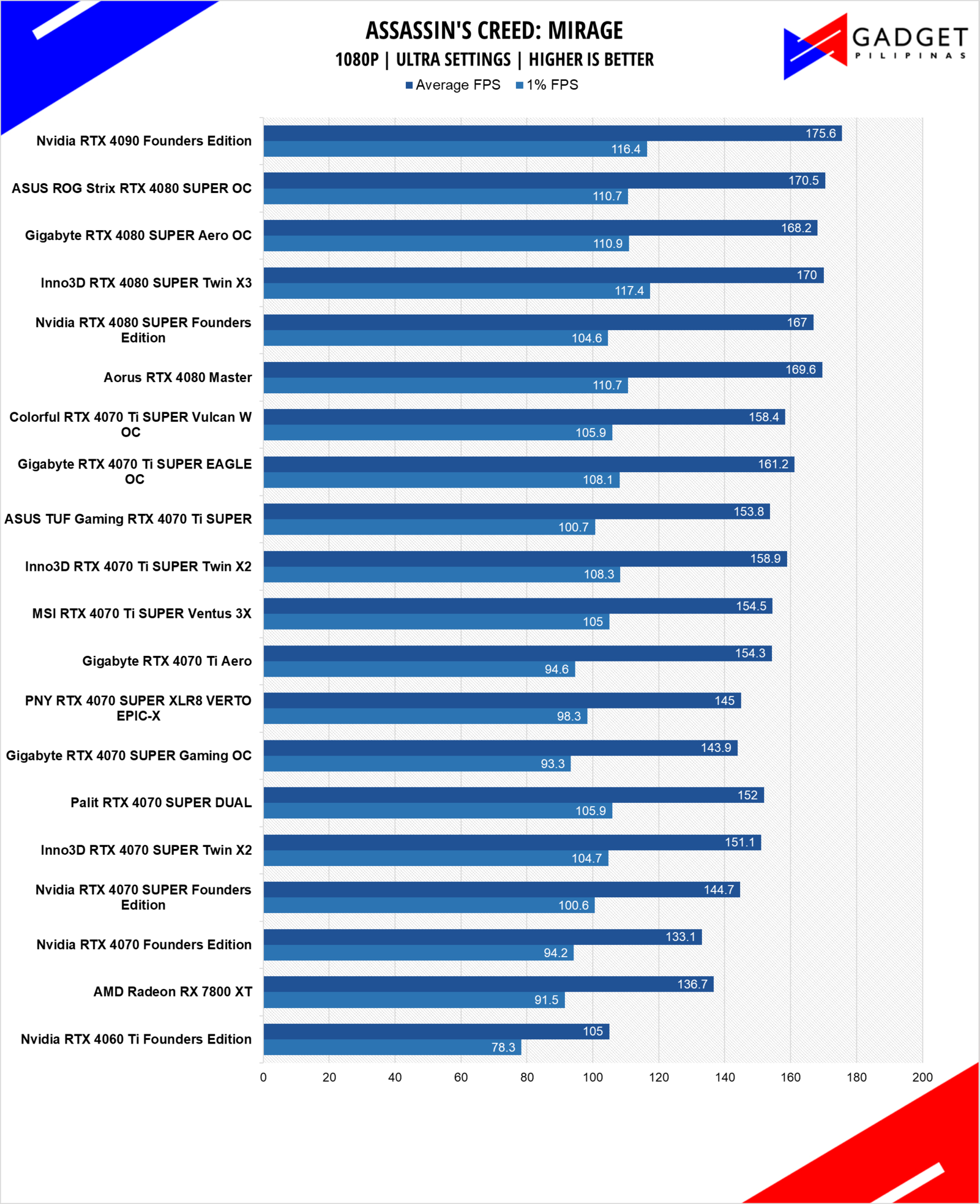
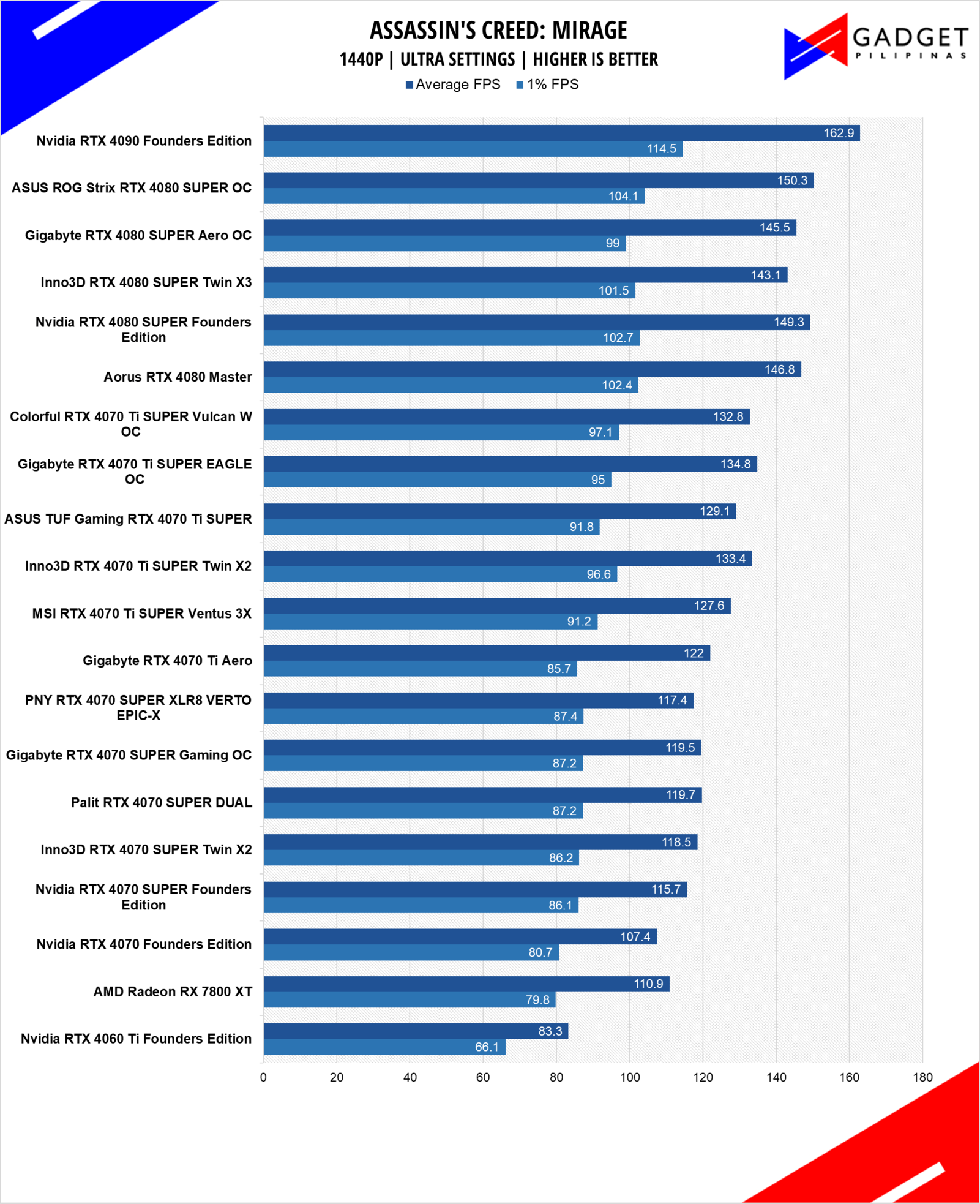
Assassin’s Creed Mirage is the latest Assassin’s Creed game from Ubisoft making it the thirteenth major installment in the franchise. It uses the AnvilNext 2.0 game engine and is the very first AC game to support the latest upscaling technology such as XeSS, FSR, and DLSS.
Cyberpunk 2077
Cyberpunk 2077 is arguably the most hyped game of 2020. Developed by CD Projekt Red, the dystopian open-world, action-adventure RPG sports is one of the most demanding titles to date. Cyberpunk 2077 also supports three Ray Tracing settings as well as DLSS which makes the game a great tool to measure Ray tracing performance for both AMD and Nvidia graphics cards.
Far Cry 6
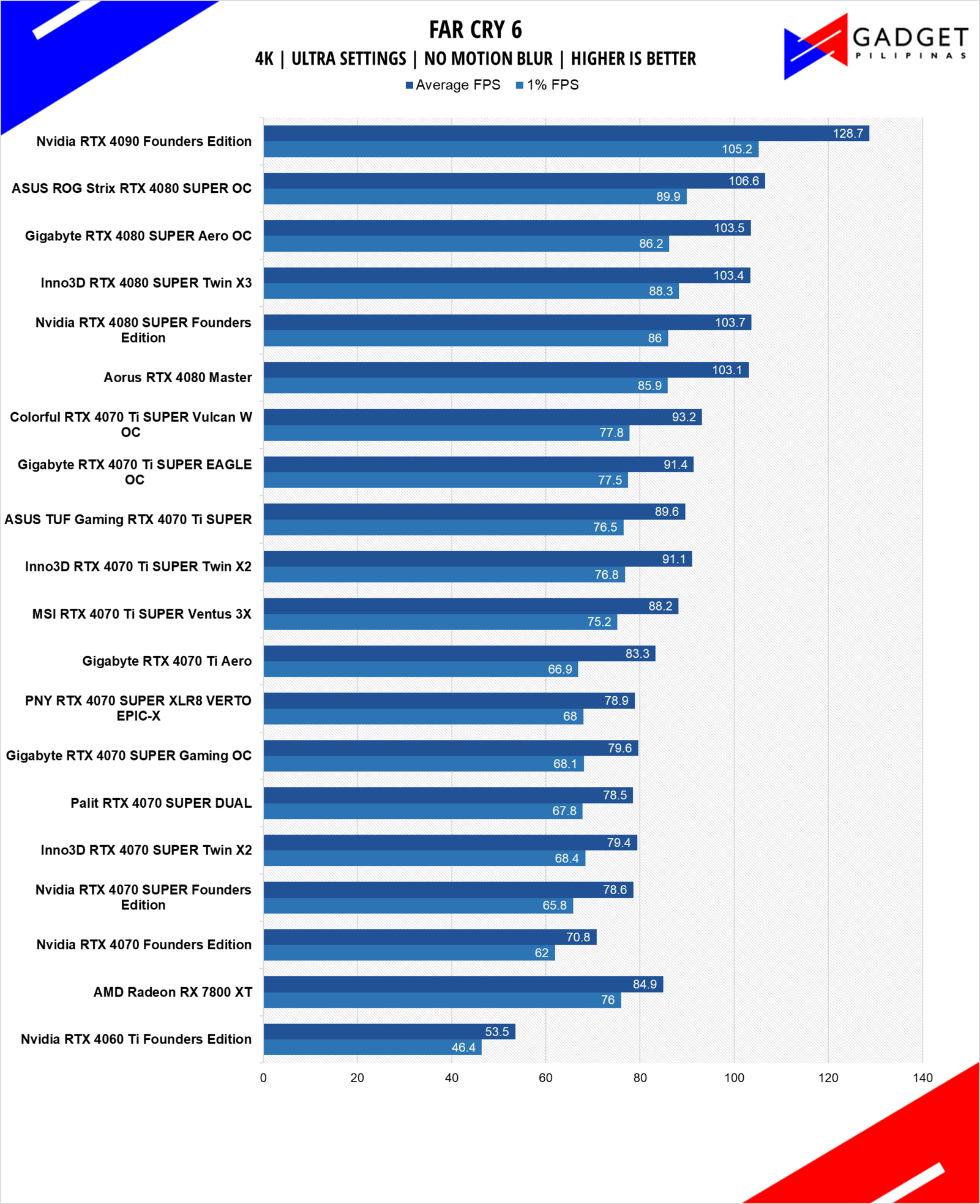
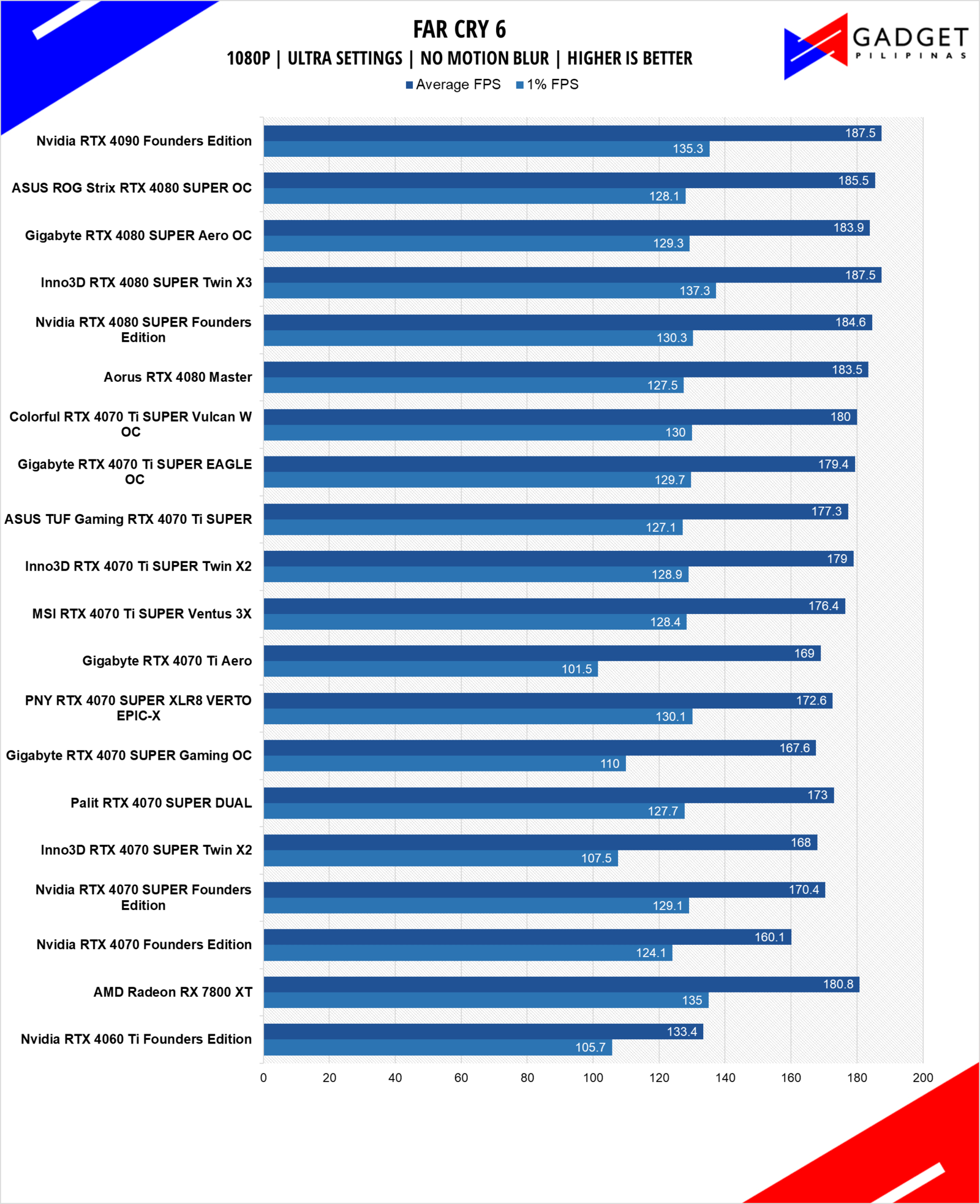

FarCry 6 is an FPS game published by Ubisoft and uses the Dunia engine. It heavily relies on and takes advantage of DirectX 12 to render a realistic environment that makes it taxing to both the CPU and GPU. It’s also the first game of the franchise to support Ray Tracing.
Rainbow Six Siege
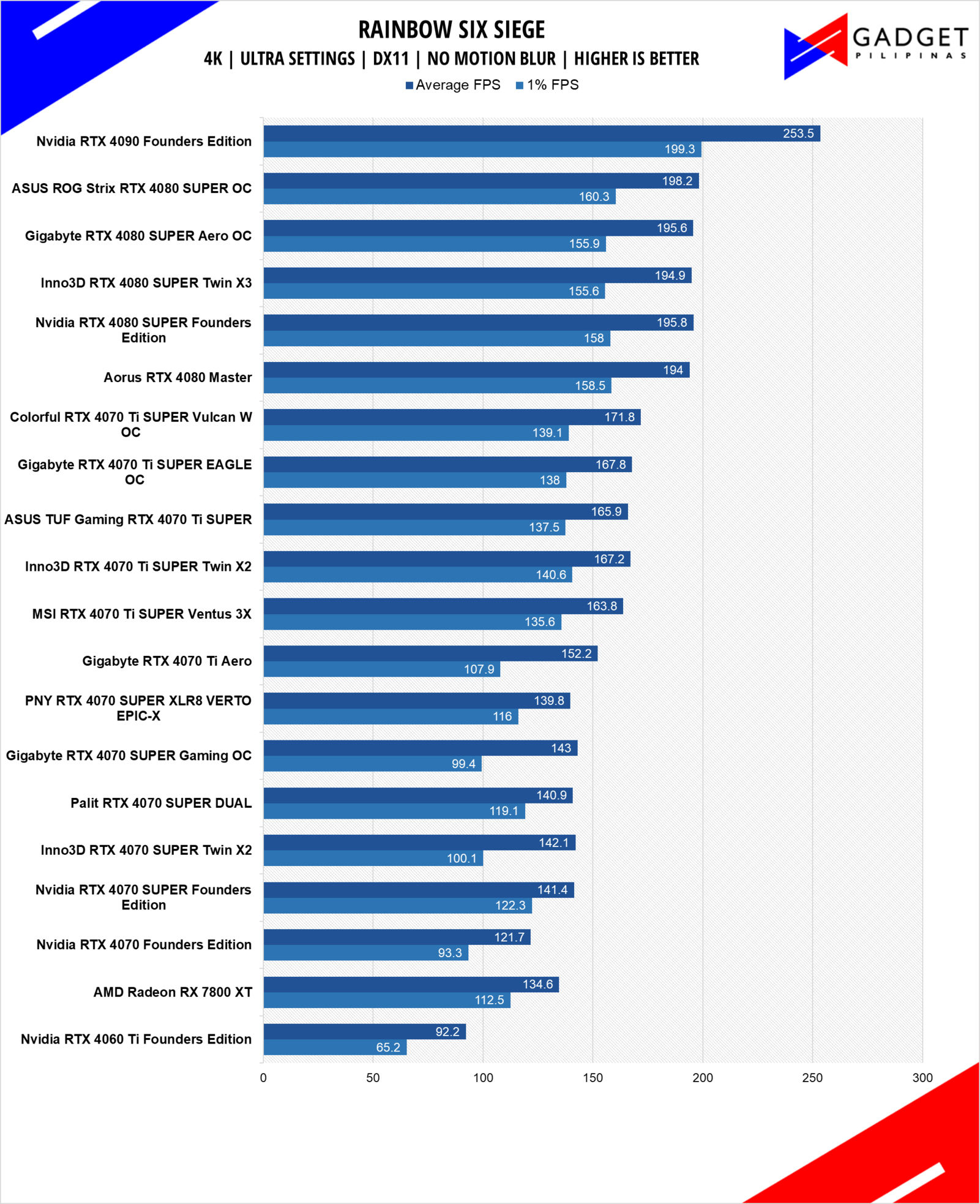
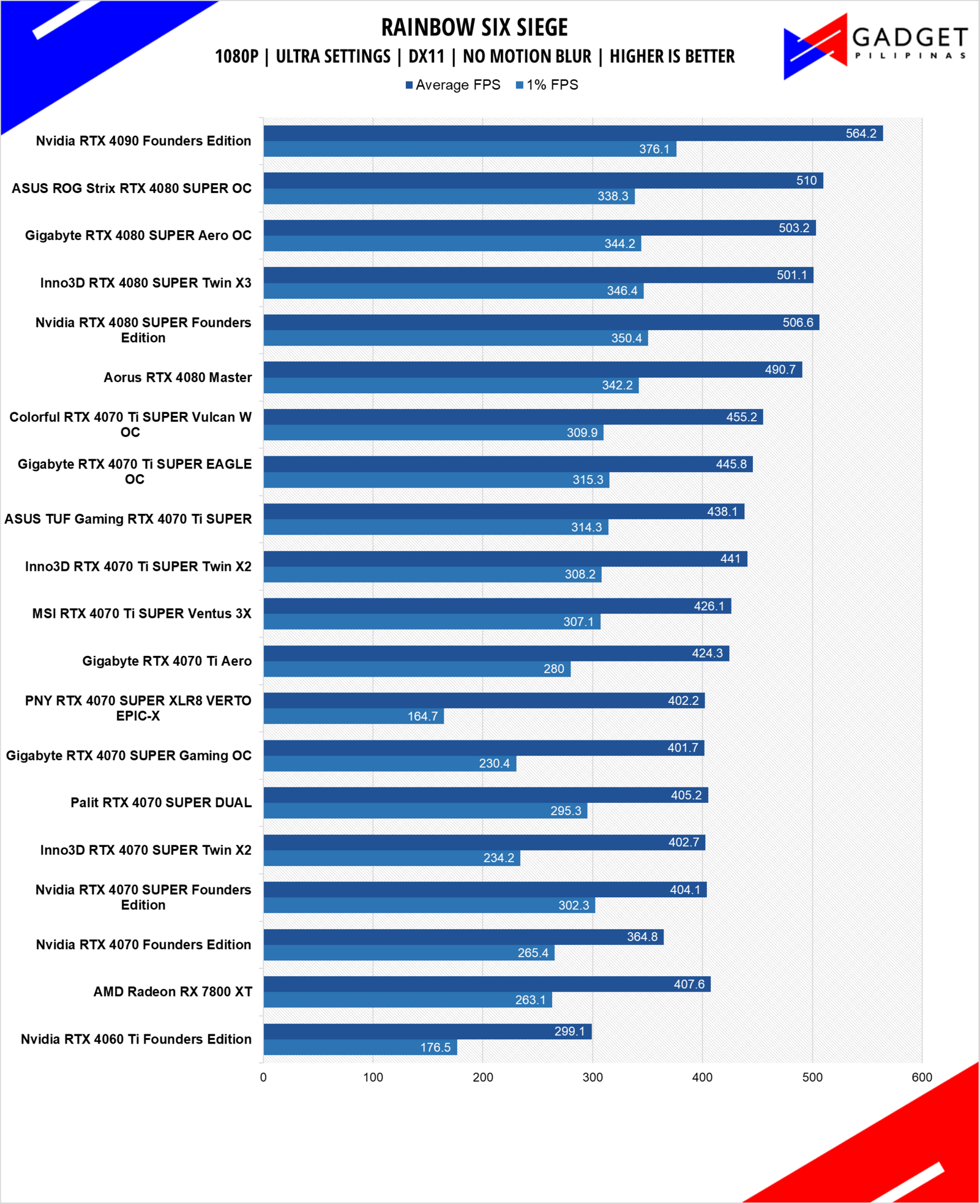
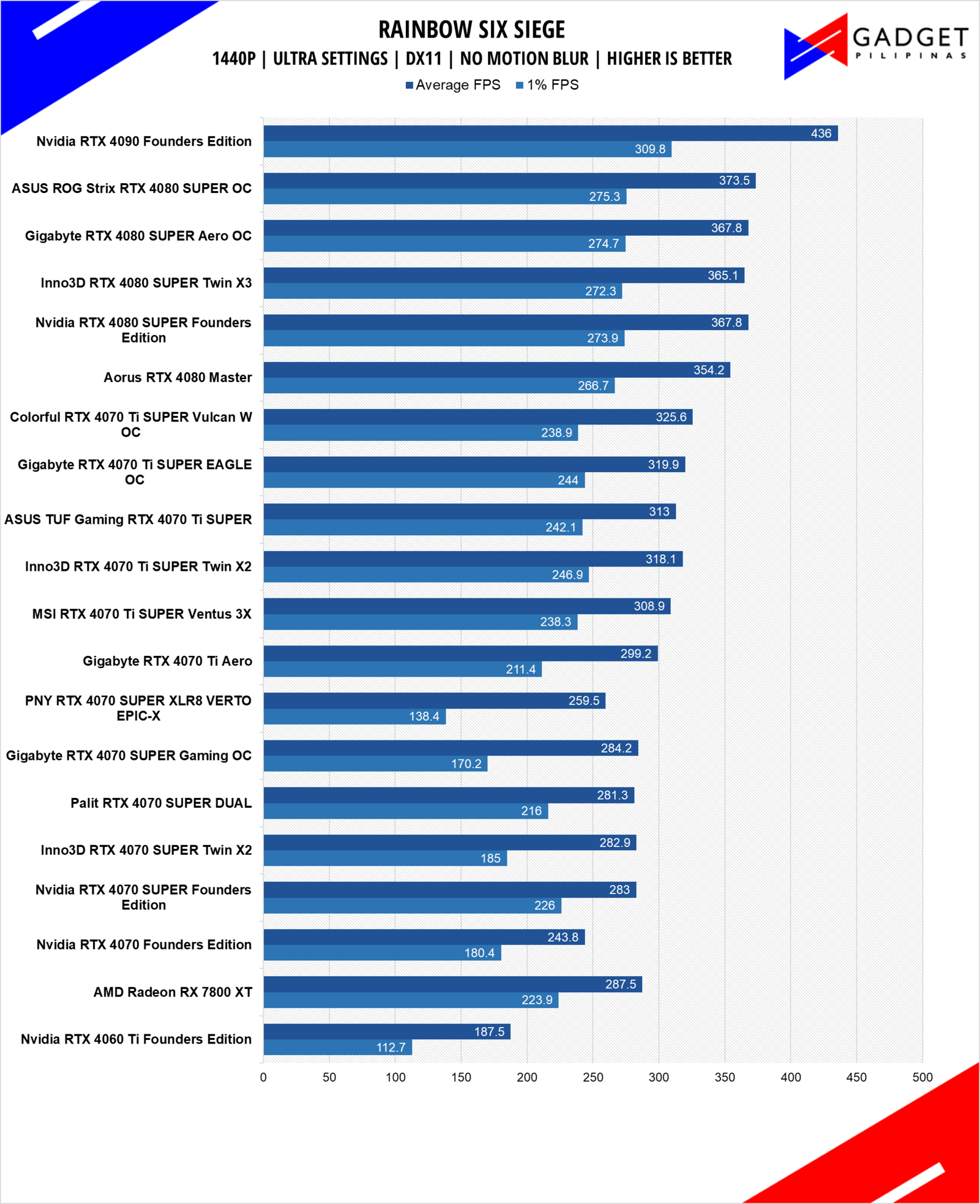
Rainbow Six Seige is one of the few popular AAA games that’s still popular in 2021 due to its competitive gameplay mechanics. R6S uses the AnvilNext game engine, which the game’s publisher, Ubisoft, developed. As of writing, Rainbow Six Siege is currently the most popular Tom Clancy title beating out Wildlands, Breakpoint, and even Division 2.
Shadow of The Tomb Raider
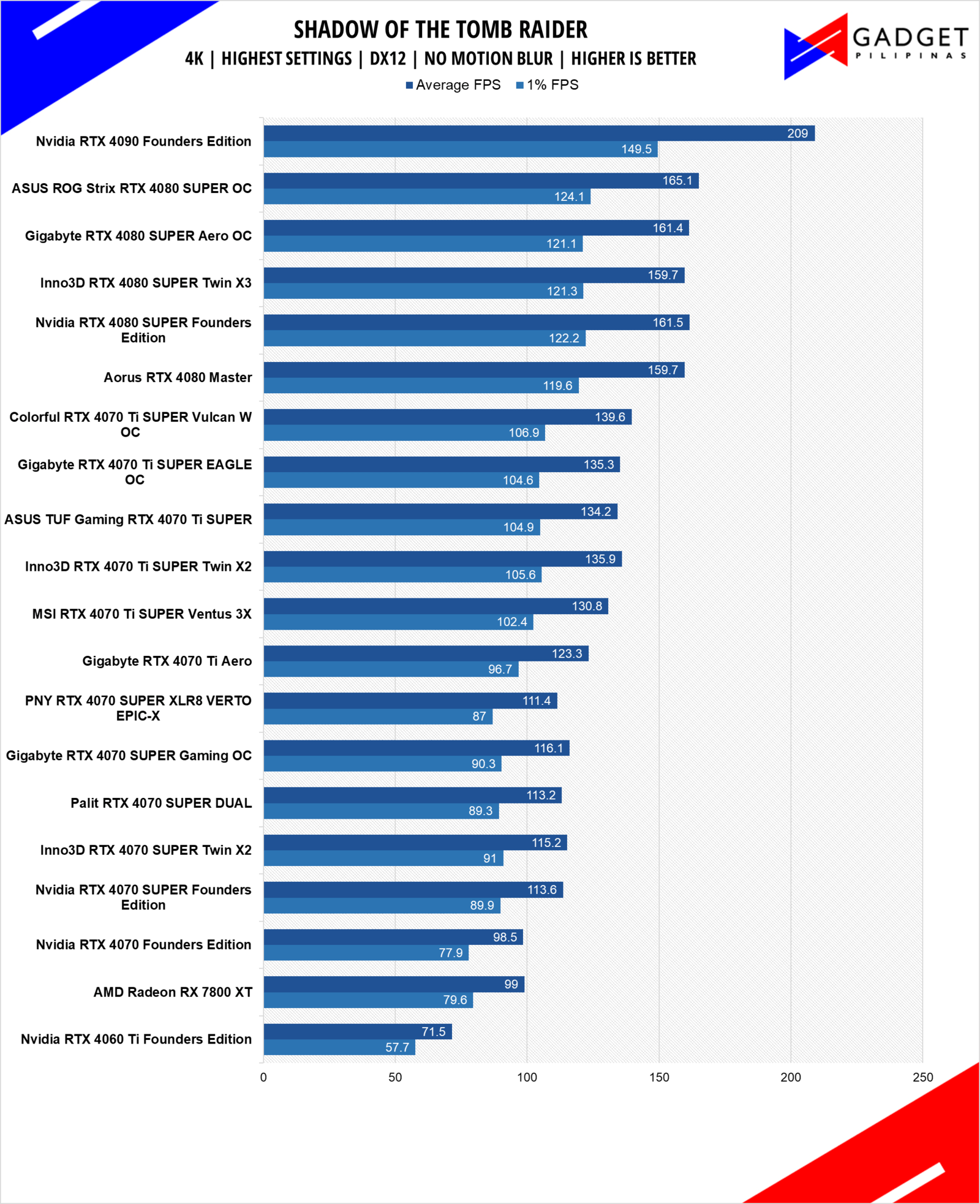
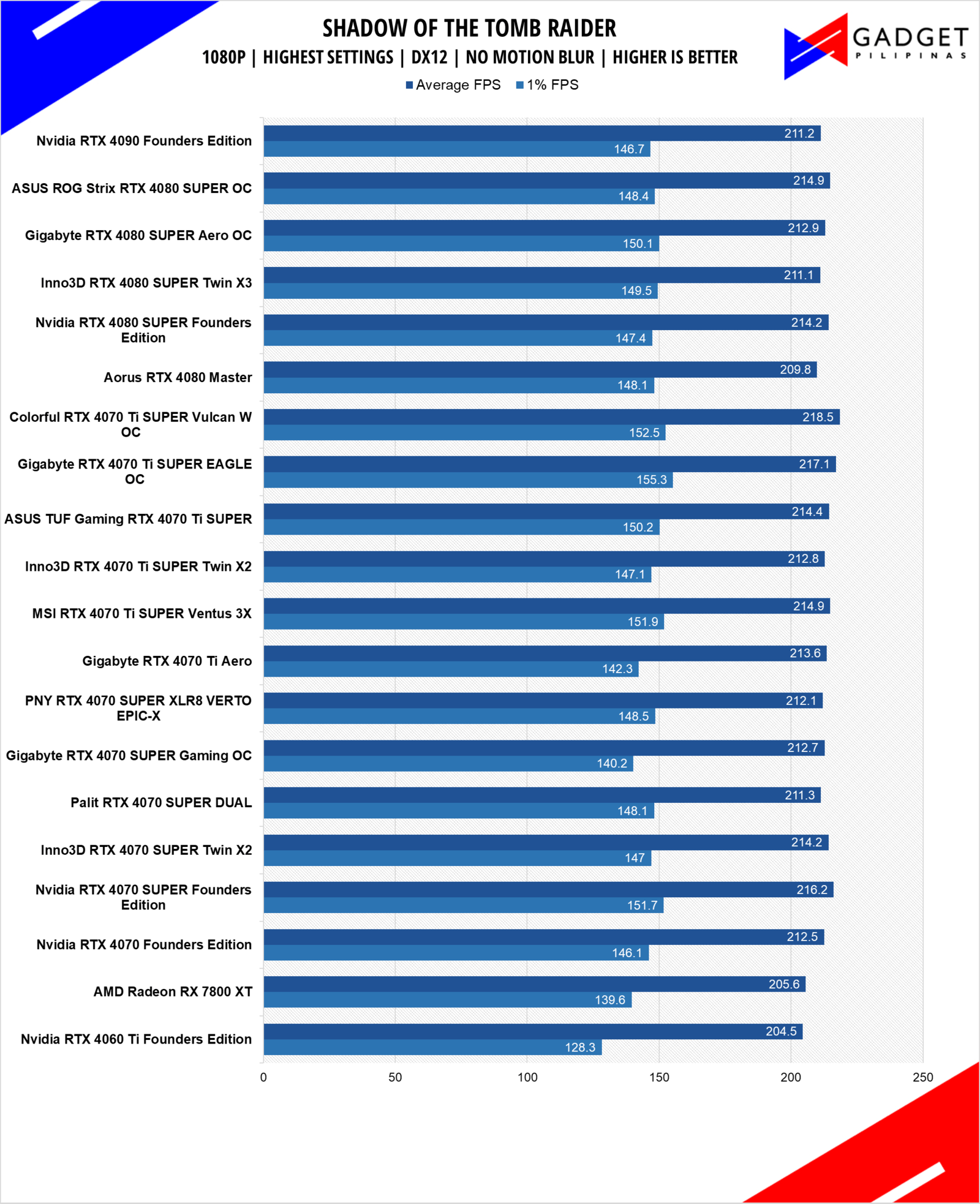
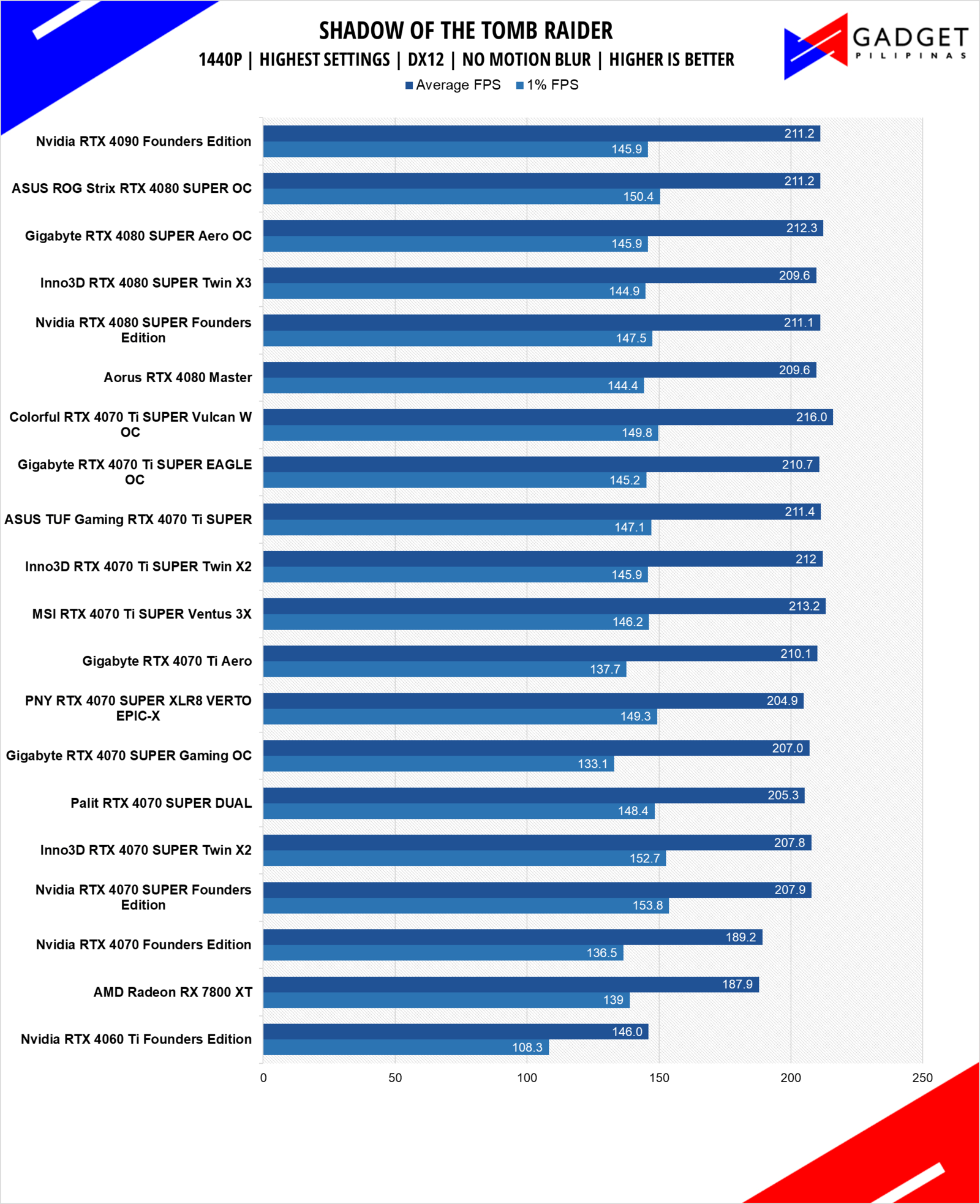
Shadow of The Tomb Raider or SOTR is the latest installment of the Lara Croft Tomb Raider franchise. Developed by Square Enix, SOTR uses the Foundation engine and is further enhanced by Eidos Montreal. SOTR is also one of the first games to come out with Ray Tracing and DLSS support.
Metro Exodus
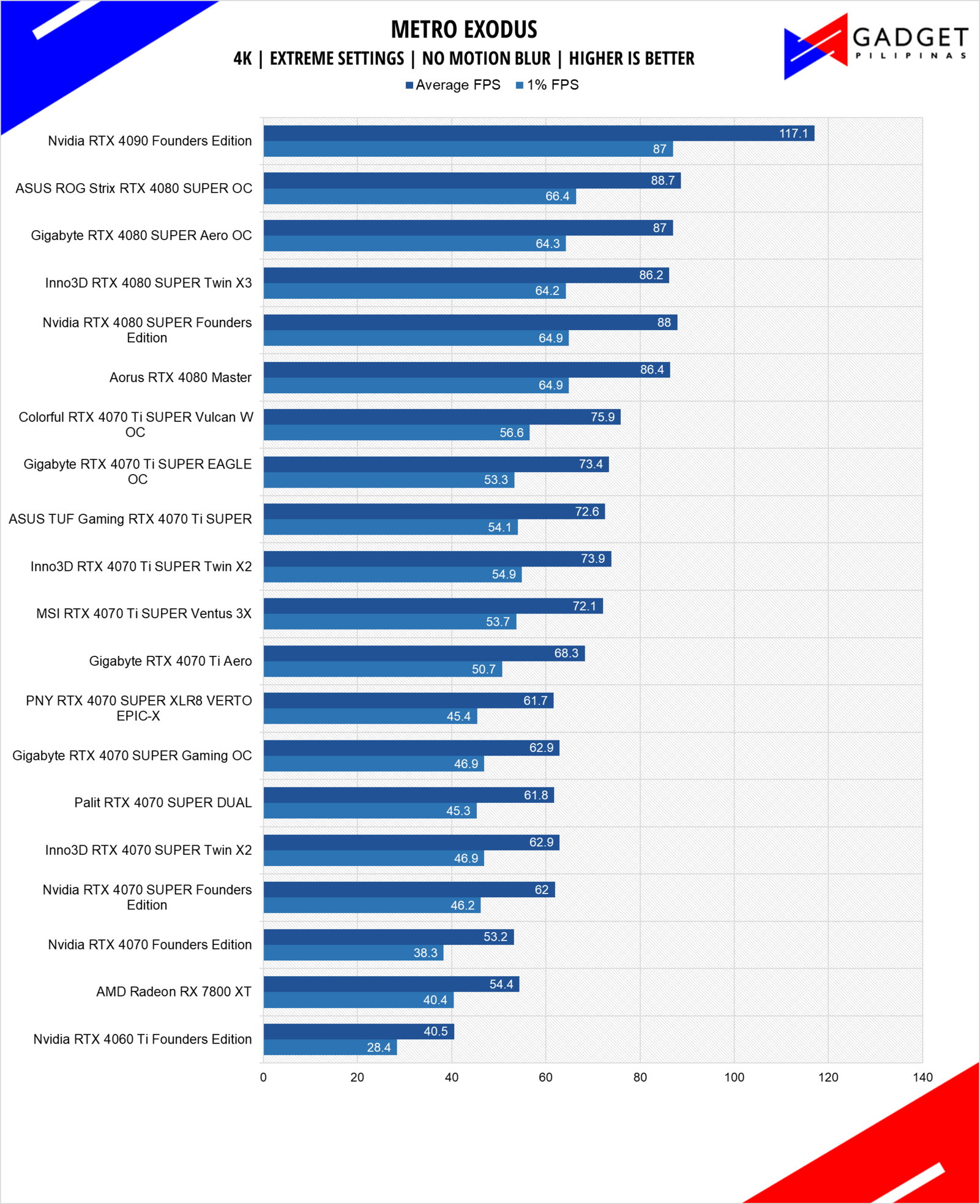
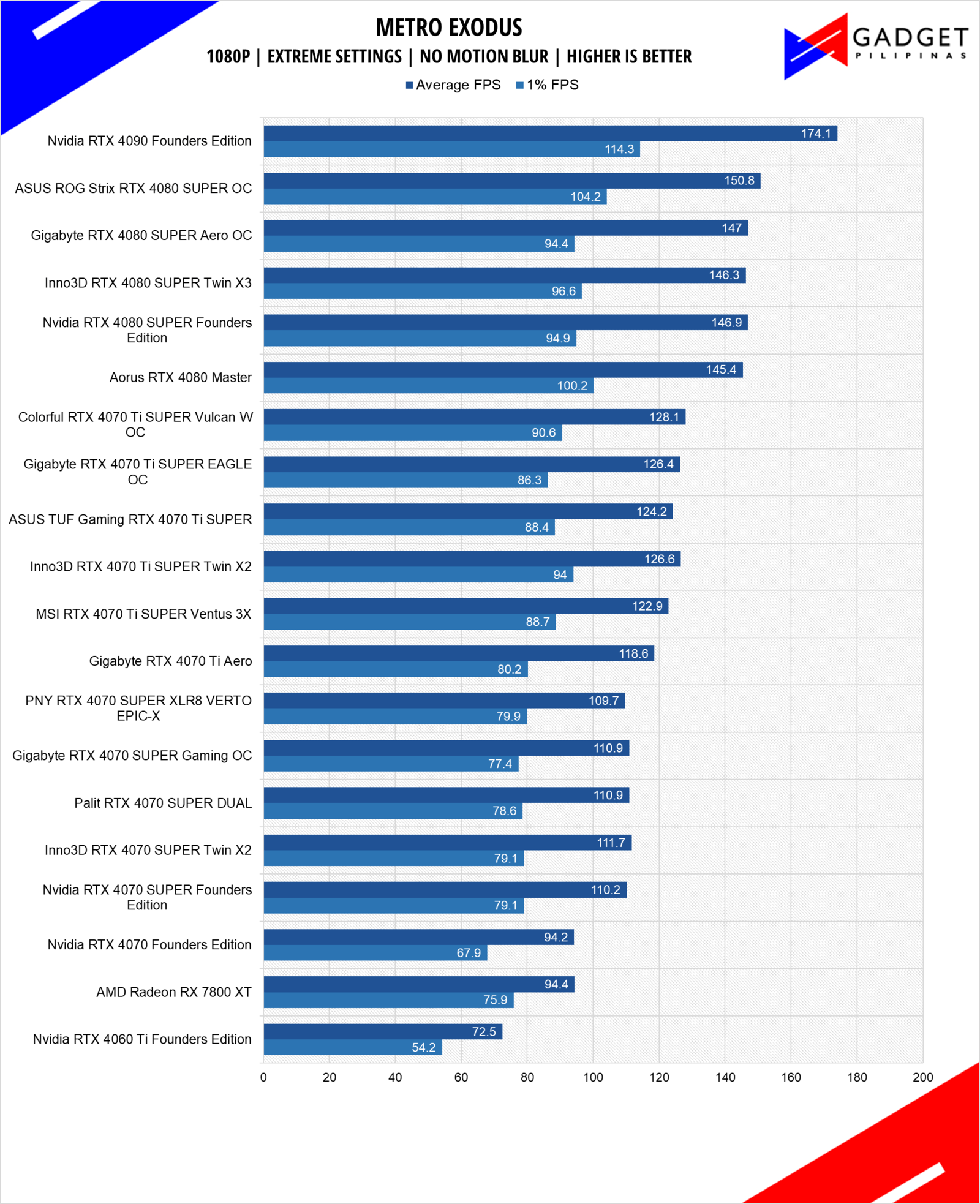
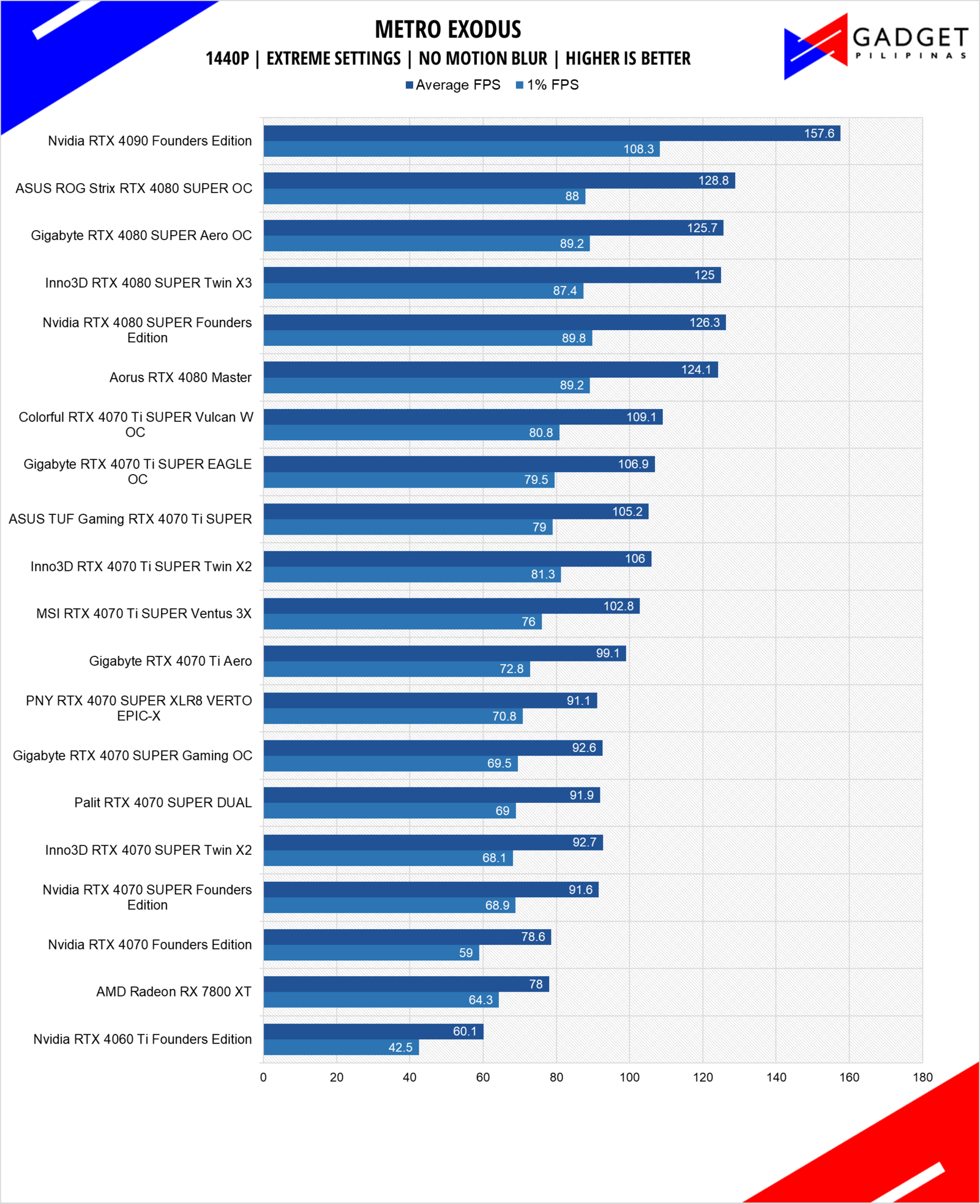
Metro Exodus is the third Metro game trilogy based on Dmitry Glukhovsky’s novels. The game is a first-person shooter with survival horror and stealth elements. The post-apocalyptic game uses 4A Engine by 4A games. Released last 2019, Metro Exodus remains to be one of the most graphically pleasing and demanding games that’s popular to date.
Colorful iGame RTX 4070 Ti SUPER Vulcan W OC Temperatures and Power Draw
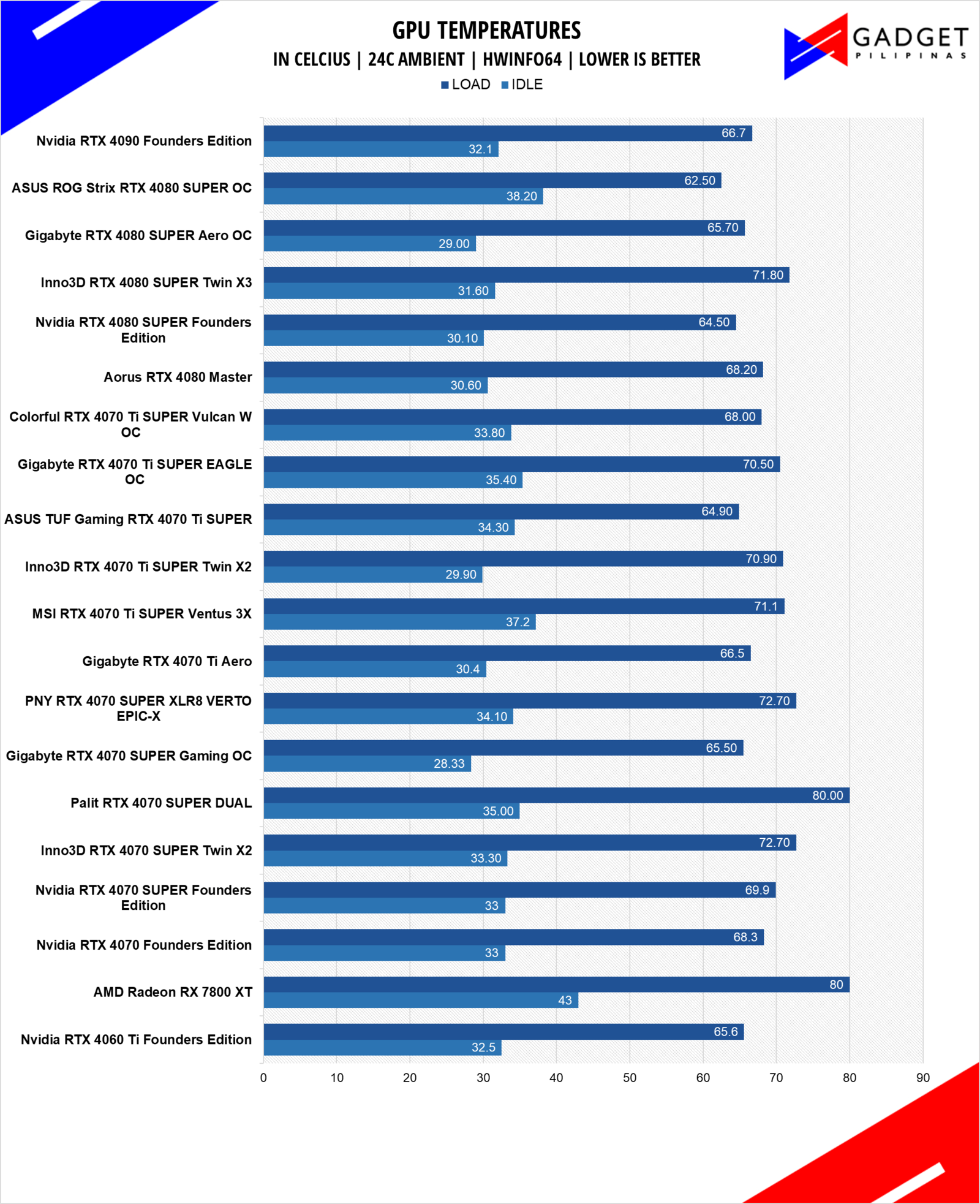
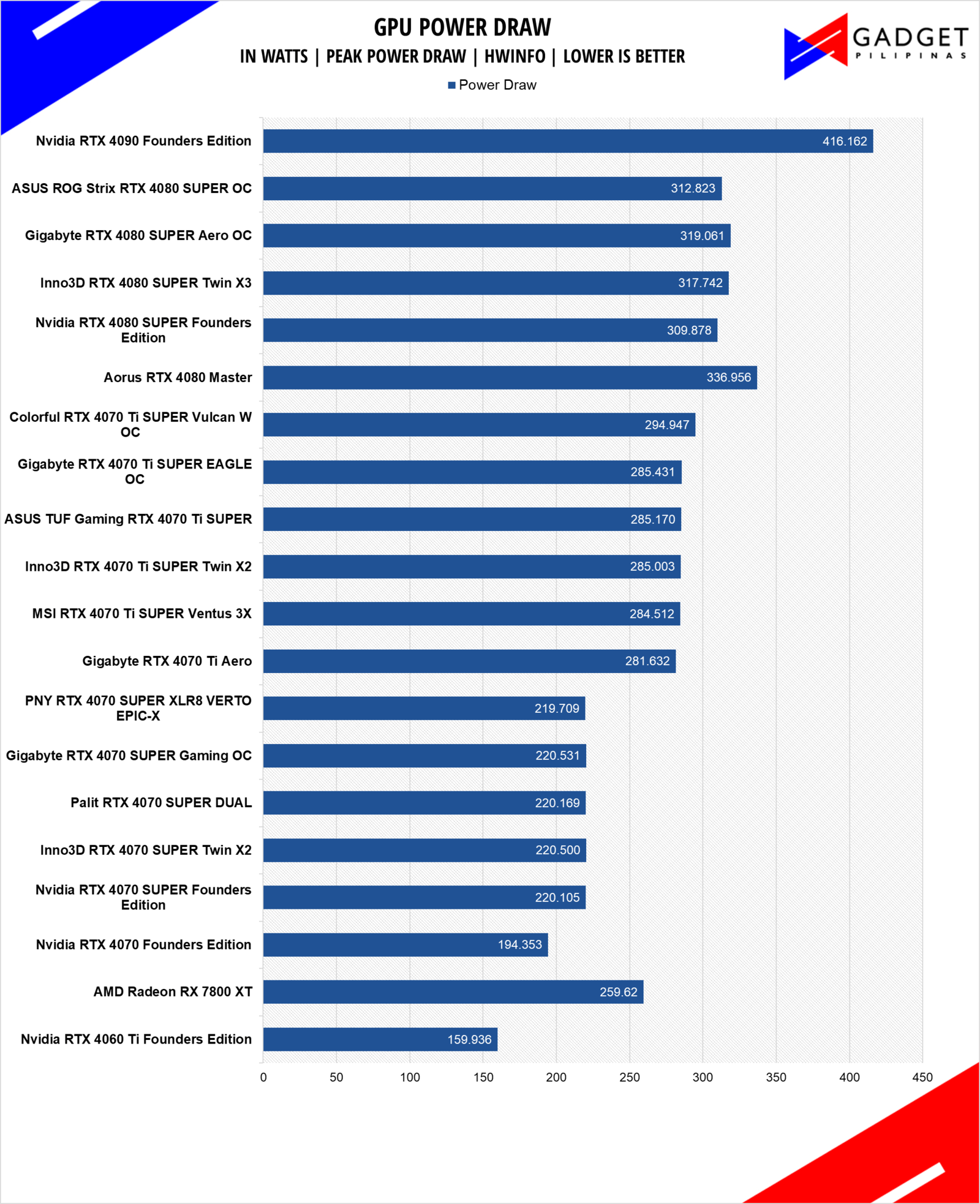
The Colorful iGame RTX 4070 TI SUPER Vulcan W OC’s cooler is not the best RTX 40 series cooler shroud out there but it certainly ranks as one of the better ones with only a peak recorded temperature at 68°C. It does have a slightly higher idle temp at 33.8°C compared to the rest of the RTX 4070 Ti SUPER GPUs but this is mainly due to the 0dB feature and not due to the cooler itself.
Peak power draw at 294.947W was recorded which is higher than the 285W TGP likely due to the detchable LCD.
Performance Summary Conclusion
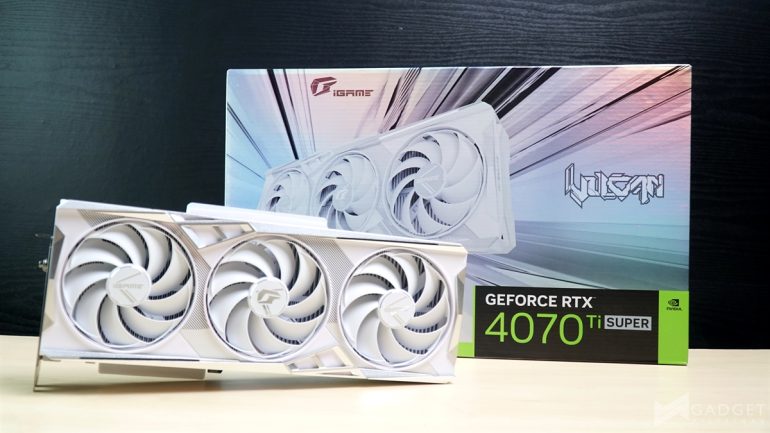
Echoing the things that we highlighted on our previous iGame RTX 4090 SUPER Vulcan OC-V review, the Vulcan GPU model is a premium GPU and still remains to be a great alternative to regions where the Founders Edition isn’t available such as the Philippines – which makes it a much more compelling purchase with the RTX 4070 Ti SUPER as Nvidia didn’t release an FE variant. It has the performance to match known premium GPU models but at a very competitive premium price of only Php 60,000. The Php 4,500 premium go towards build quality, aesthetic, and performance but also a unique detachable LCD display to further customize your PC build.
It has the checkmarks of a flagship tier model particularly higher clocks, RGB lighting, cool temperatures, build quality, 1-click OC button all while offering more to the table in terms of customization thanks to its Vulcan LCD display. That said, the aforementioned 1-click OC button placement sacrifices the potential extra video output. Albeit considering that the Vulcan model we’re reviewing is an RTX 4070 Ti SUPER and not an RTX 4090, I’d say its a trade-off I’m willing to take for the sake of accessibility.
Overall, the Colorful iGame RTX 4070 Ti SUPER Vulcan W OC is our easy recommendation for those looking to get not only one of the best looking white GPU but also one of best in terms of build quality, and performance.

Grant is a Financial Management graduate from UST. His passion for gadgets and tech crossed him over in the industry where he could apply his knowledge as an enthusiast and in-depth analytic skills as a Finance Major. His passion allows him to earn at the same time help Gadget Pilipinas' readers in making smart, value-based decisions and purchases with his reviews and guides.




